Hey y& #39;all. In a few days I& #39;m off to Canary Islands for the 2019 Eleonora& #39;s Falcon #fieldwork! https://abs.twimg.com/emoji/v2/... draggable="false" alt="🤗" title="Umarmendes Gesicht" aria-label="Emoji: Umarmendes Gesicht">
https://abs.twimg.com/emoji/v2/... draggable="false" alt="🤗" title="Umarmendes Gesicht" aria-label="Emoji: Umarmendes Gesicht">
Internet comes and goes on the remote Isla de #Alegranza, but I& #39;ll try to share experiences in this thread over nxt 2.5 months. ¡Vamos! https://abs.twimg.com/emoji/v2/... draggable="false" alt="👇" title="Rückhand Zeigefinger nach unten" aria-label="Emoji: Rückhand Zeigefinger nach unten">
https://abs.twimg.com/emoji/v2/... draggable="false" alt="👇" title="Rückhand Zeigefinger nach unten" aria-label="Emoji: Rückhand Zeigefinger nach unten">
#EF2019 #ornithology #movementecology [1/n]
Internet comes and goes on the remote Isla de #Alegranza, but I& #39;ll try to share experiences in this thread over nxt 2.5 months. ¡Vamos!
#EF2019 #ornithology #movementecology [1/n]
Before heading off, let me give a brief intro to the Canarian Eleonora& #39;s #Falcon project, our study site, and our objectives for this year. Because there is a lot of reasons why these gorgeous falcons provide a mighty interesting study system... #EF2019 [2/n]
Firstly, let& #39;s talk distribution. Eleonora& #39;s Falcons are colonial breeders. They mainly breed on islands across the #Mediterranean & off the coast of NW #Africa. The #CanaryIslands are thus the westernmost limit of their breeding range
Map source: @BirdLife_News
#EF2019 [3/n]
Map source: @BirdLife_News
#EF2019 [3/n]
Despite their broad and patchy breeding distribution, all Eleonora& #39;s Falcons migrate to northern #Madagascar. This was shown beautifully by Christina Kassara who pooled tracking data from all across the breeding range.
Full paper: https://www.nature.com/articles/s41598-017-08753-w
https://www.nature.com/articles/... href="https://twtext.com//hashtag/EF2019"> #EF2019 [4/n]
Full paper: https://www.nature.com/articles/s41598-017-08753-w
Eleonora& #39;s Falcons thus engage in a spectacular trans-African #migration. But I won& #39;t go into detail abt that just yet. What& #39;s most important for us now is that the falcons are back near the colonies and will start laying any day...
Map: unpublished #UvABiTS data
#EF2019 [5/n]
Map: unpublished #UvABiTS data
#EF2019 [5/n]
In the Canary Islands, Eleonora& #39;s Falcons only breed on the uninhabited islets of the #Chinijo archipelago north of #Lanzarote: Roque del Este, Roque del Oeste, Montaña Clara and #Alegranza. Although historic data is scant, the pop. seems stable at ca. 290 pairs.
#EF2019 [6/n]
#EF2019 [6/n]
About half the #Chinijo pop of Eleonora& #39;s Falcon lives on Isla de #Alegranza, also our main study site. We& #39;ll spend much of the coming 2.5 mths walking up and down the craters on this relatively barren island of 10.2 sq km. I feel tiny and insignificant already... https://abs.twimg.com/emoji/v2/... draggable="false" alt="😅" title="Lächelndes Gesicht mit offenem Mund und Angstschweiß" aria-label="Emoji: Lächelndes Gesicht mit offenem Mund und Angstschweiß"> #EF2019 [7/n]
https://abs.twimg.com/emoji/v2/... draggable="false" alt="😅" title="Lächelndes Gesicht mit offenem Mund und Angstschweiß" aria-label="Emoji: Lächelndes Gesicht mit offenem Mund und Angstschweiß"> #EF2019 [7/n]
But why do Eleonora& #39;s Falcons come all the way from Madagascar to breed here? And why so late? Well, even though the falcons hunt insects most of the year, they can target other, more rewarding aerial prey here: migrant #songbirds en route to Africa!
#EF2019 [8/n]
#EF2019 [8/n]
Songbirds usually migrate at night to avoid predators. But many are still out at sea by dawn, making them easy targets for hungry falcons. Eleonora& #39;s Falcons have organised their entire annual cycle in order to exploit this massive seasonal food bonanza. #EF2019 [9/n]
But wait there& #39;s more! Because while Eleonora& #39;s Falcons in the Mediterranean likely enjoy a steady supply of songbirds all season, falcons in the #Chinijo depend on NE trade winds to blow migrants out to the Atlantic Ocean.
Source: https://royalsocietypublishing.org/doi/abs/10.1098/rspb.2015.2406
https://royalsocietypublishing.org/doi/abs/1... href="https://twtext.com//hashtag/EF2019"> #EF2019 [10/n]
Source: https://royalsocietypublishing.org/doi/abs/10.1098/rspb.2015.2406
So it seems the falcons can breed on #CanaryIslands bc NE trade winds provide a reliable supply of migrant songbird prey. However, some yrs winds don& #39;t blow for several days and females start cannibalising each other& #39;s chicks, so that the breeding season is lost. #EF2019 [11/n]
These boom-bust dynamics, controlled by climate-dependent winds, are a topic of major interest in the project, and also one of the reasons we track hunting behaviour of adult falcons with #UvABiTS GPS-trackers from @IBED_UvA. #EF2019 [12/n]
We also hope to learn how migration and other life-history traits are linked wt colour-polymorphism in this species. But I& #39;ll tweet more abt that later. For now I hope to have given you ample reasons to keep an eye on this thread over next few months!  https://abs.twimg.com/emoji/v2/... draggable="false" alt="🤗" title="Umarmendes Gesicht" aria-label="Emoji: Umarmendes Gesicht"> #EF2019 [13/n]
https://abs.twimg.com/emoji/v2/... draggable="false" alt="🤗" title="Umarmendes Gesicht" aria-label="Emoji: Umarmendes Gesicht"> #EF2019 [13/n]
If you can& #39;t wait to learn more you can always dive into the project website here: https://eleonorasfalcon.org/ ">https://eleonorasfalcon.org/">...
And make sure to check out our project leader Laura Gangoso. She is not on Twitter, but a truly amazing scientist worth reading!
#EF2019 [14/n]
And make sure to check out our project leader Laura Gangoso. She is not on Twitter, but a truly amazing scientist worth reading!
#EF2019 [14/n]
Just landed in Lanzarote. Seems like we& #39;ll go to Alegranza tomorrow late afternoon ... Stay tuned! #EF2019 [15/n]
Now all we need is a boat ...  https://abs.twimg.com/emoji/v2/... draggable="false" alt="🤗" title="Umarmendes Gesicht" aria-label="Emoji: Umarmendes Gesicht"> #EF2019 [16/n]
https://abs.twimg.com/emoji/v2/... draggable="false" alt="🤗" title="Umarmendes Gesicht" aria-label="Emoji: Umarmendes Gesicht"> #EF2019 [16/n]
Woohoo! We made landfall on Alegranza. Fortunately the Spanish flag being torn of the boat was not a bad omen and contrary to last yr I didnt engage in involuntary shearwater chumming  https://abs.twimg.com/emoji/v2/... draggable="false" alt="😆" title="Lächelndes Gesicht mit geöffnetem Mund und fest verschlossenen Augen" aria-label="Emoji: Lächelndes Gesicht mit geöffnetem Mund und fest verschlossenen Augen">. Greeted by 4 falcons upon arrival. Now setting up camp. Good to be here! #EF2019 [17/n]
https://abs.twimg.com/emoji/v2/... draggable="false" alt="😆" title="Lächelndes Gesicht mit geöffnetem Mund und fest verschlossenen Augen" aria-label="Emoji: Lächelndes Gesicht mit geöffnetem Mund und fest verschlossenen Augen">. Greeted by 4 falcons upon arrival. Now setting up camp. Good to be here! #EF2019 [17/n]
Punto Delgado in the southeast corner of Alegranza. This is the place we call home for the nxt few months. No shower for us. But who needs one when you can jump in the ocean every day #EF2019 [18/n]
After setting up the first of two UvABiTS base stations we are already receiving data from 3 of 4 tagged falcons that breed on Montaña Clara!  https://abs.twimg.com/emoji/v2/... draggable="false" alt="😍" title="Lächelndes Gesicht mit herzförmigen Augen" aria-label="Emoji: Lächelndes Gesicht mit herzförmigen Augen"> We will be building the antenna network on Alegranza over course of nxt few days.
https://abs.twimg.com/emoji/v2/... draggable="false" alt="😍" title="Lächelndes Gesicht mit herzförmigen Augen" aria-label="Emoji: Lächelndes Gesicht mit herzförmigen Augen"> We will be building the antenna network on Alegranza over course of nxt few days.  https://abs.twimg.com/emoji/v2/... draggable="false" alt="🤘" title="Heavy-Metal-Handzeichen" aria-label="Emoji: Heavy-Metal-Handzeichen"> #EF2019 [19/n]
https://abs.twimg.com/emoji/v2/... draggable="false" alt="🤘" title="Heavy-Metal-Handzeichen" aria-label="Emoji: Heavy-Metal-Handzeichen"> #EF2019 [19/n]
This afternoon we set up our 2nd #UvABiTS base station and immediately a 4th bird made contact. 13 more to go! We also installed camera traps at the only water source on Alegranza. Falcons drink there and wt cameras we can read colour rings for survival analyses. #EF2019 [20/n]
Good morning tweetiepies! Today we& #39;ll head out to install #UvABiTS antennes on various hilltops across #Alegranza. That should help us get in contact with a bunch of GPS-tagged falcons. Exciting times. Stay tuned and enjoy your weekend! #EF2019 [21/n]
Antenna Caldera is up and running. 8 falcons made contact by now.  https://abs.twimg.com/emoji/v2/... draggable="false" alt="😊" title="Lächelndes Gesicht mit lächelnden Augen" aria-label="Emoji: Lächelndes Gesicht mit lächelnden Augen"> Another antenna is being installed at other end of the crater now
https://abs.twimg.com/emoji/v2/... draggable="false" alt="😊" title="Lächelndes Gesicht mit lächelnden Augen" aria-label="Emoji: Lächelndes Gesicht mit lächelnden Augen"> Another antenna is being installed at other end of the crater now  https://abs.twimg.com/emoji/v2/... draggable="false" alt="🤘" title="Heavy-Metal-Handzeichen" aria-label="Emoji: Heavy-Metal-Handzeichen"> #EF2019 [22/n]
https://abs.twimg.com/emoji/v2/... draggable="false" alt="🤘" title="Heavy-Metal-Handzeichen" aria-label="Emoji: Heavy-Metal-Handzeichen"> #EF2019 [22/n]
Just got back from installing an #UvABiTS on Lobos mountain, my favourite mtn, with our awesome team leader Laura. Meanwhile Walo installed another on Morro de Rapadura. Marina kept an eye on base station to ensure network is functioning. 9 GPS falcons now!  https://abs.twimg.com/emoji/v2/... draggable="false" alt="😍" title="Lächelndes Gesicht mit herzförmigen Augen" aria-label="Emoji: Lächelndes Gesicht mit herzförmigen Augen">
https://abs.twimg.com/emoji/v2/... draggable="false" alt="😍" title="Lächelndes Gesicht mit herzförmigen Augen" aria-label="Emoji: Lächelndes Gesicht mit herzförmigen Augen"> https://abs.twimg.com/emoji/v2/... draggable="false" alt="😊" title="Lächelndes Gesicht mit lächelnden Augen" aria-label="Emoji: Lächelndes Gesicht mit lächelnden Augen"> #EF2019 [23/n]
https://abs.twimg.com/emoji/v2/... draggable="false" alt="😊" title="Lächelndes Gesicht mit lächelnden Augen" aria-label="Emoji: Lächelndes Gesicht mit lächelnden Augen"> #EF2019 [23/n]
Amazing views from Mount Lobos ...  https://abs.twimg.com/emoji/v2/... draggable="false" alt="😍" title="Lächelndes Gesicht mit herzförmigen Augen" aria-label="Emoji: Lächelndes Gesicht mit herzförmigen Augen">. Tomorrow, however, all our muscles will hurt so we& #39;ll take it a bit easier and start censussing the Rapadura colony near our base camp. Now for a refreshing dive in the ocean and an equally refreshing Dorado beer. Cheers
https://abs.twimg.com/emoji/v2/... draggable="false" alt="😍" title="Lächelndes Gesicht mit herzförmigen Augen" aria-label="Emoji: Lächelndes Gesicht mit herzförmigen Augen">. Tomorrow, however, all our muscles will hurt so we& #39;ll take it a bit easier and start censussing the Rapadura colony near our base camp. Now for a refreshing dive in the ocean and an equally refreshing Dorado beer. Cheers  https://abs.twimg.com/emoji/v2/... draggable="false" alt="😉" title="Zwinkerndes Gesicht" aria-label="Emoji: Zwinkerndes Gesicht"> #EF2019 [24/n]
https://abs.twimg.com/emoji/v2/... draggable="false" alt="😉" title="Zwinkerndes Gesicht" aria-label="Emoji: Zwinkerndes Gesicht"> #EF2019 [24/n]
Censussing Rapadura colony this morning. Historically abt 20 pairs of falcons here, 8 of which on this side. So far 2 nests with lots of activity. We& #39;ll find more for sure. Just a matter of patience. Lots of patience  https://abs.twimg.com/emoji/v2/... draggable="false" alt="😉" title="Zwinkerndes Gesicht" aria-label="Emoji: Zwinkerndes Gesicht"> #EF2019 [25/n]
https://abs.twimg.com/emoji/v2/... draggable="false" alt="😉" title="Zwinkerndes Gesicht" aria-label="Emoji: Zwinkerndes Gesicht"> #EF2019 [25/n]
So fun to watch falcon interactions on Rapadura. Managed a quick video wt phone through telescope. Male (on the right) came back to nest without prey. Female did not seem very pleased with that. She uttered begging calls, apparantly sending him off to hunt again. #EF2019 [26/n]
Ended todays census with views of an Eleonara& #39;s Falcon preening on an Osprey nest.  https://abs.twimg.com/emoji/v2/... draggable="false" alt="😍" title="Lächelndes Gesicht mit herzförmigen Augen" aria-label="Emoji: Lächelndes Gesicht mit herzförmigen Augen"> #EF2019 [27/n]
https://abs.twimg.com/emoji/v2/... draggable="false" alt="😍" title="Lächelndes Gesicht mit herzförmigen Augen" aria-label="Emoji: Lächelndes Gesicht mit herzförmigen Augen"> #EF2019 [27/n]
Out censussing Rapadura again today. Lot& #39;s of activity helps to identify nest sites and territories. In next few weeks we& #39;ll get a rough map of all the colonies before we visit the nests, determine clutch sizes and install nest cameras to read colour rings. #EF2019 [28/n]
Tracks of Stone Curlew on the beach near our camp site. Have not seen or heard them yet. But we are still to visit the best sites for these species. #EF2019 [29/n]
Today we wanted to census El Norte, the northern coast of Alegranza, but a sea storm causing heavy sea spray makes this impossible. So instead we collected memory cards from camera traps at the pond in the south. Few 1000 pics. Lets see if we can read some rings. #EF2019 [30/n]
We could ID 24 Eleonora& #39;s Falcons from their colour rings on camera trap footage. Oldest was ringed as chick in 2007  https://abs.twimg.com/emoji/v2/... draggable="false" alt="😍" title="Lächelndes Gesicht mit herzförmigen Augen" aria-label="Emoji: Lächelndes Gesicht mit herzförmigen Augen">. We got some great pics like this flight shot of a black morph individual. Also a Barbary Falcon (2nd pic) and lots of Long-eared and Barn Owl. #EF2019 [31/n]
https://abs.twimg.com/emoji/v2/... draggable="false" alt="😍" title="Lächelndes Gesicht mit herzförmigen Augen" aria-label="Emoji: Lächelndes Gesicht mit herzförmigen Augen">. We got some great pics like this flight shot of a black morph individual. Also a Barbary Falcon (2nd pic) and lots of Long-eared and Barn Owl. #EF2019 [31/n]
As the sea storm continued we surveyed Mount Lobos today. Spectacular start with many falcons chasing Ravens, and vice versa. After some hours males arrived wt flycatchers and other prey. We located 8 nest caves, of which 2 new nest sites found by yours truly  https://abs.twimg.com/emoji/v2/... draggable="false" alt="😎" title="Lächelndes Gesicht mit Sonnenbrille" aria-label="Emoji: Lächelndes Gesicht mit Sonnenbrille">. #EF2019 [32/n]
https://abs.twimg.com/emoji/v2/... draggable="false" alt="😎" title="Lächelndes Gesicht mit Sonnenbrille" aria-label="Emoji: Lächelndes Gesicht mit Sonnenbrille">. #EF2019 [32/n]
While censussing falcons we checked a #BarnOwl nest and found many remains of their main prey on Alegranza: Buwlers and Storm #Petrels. 100s of petrels are consumed by #owls each yr. Also some Eleonora& #39;s Falcons are specialist petrel hunters. More on that later ... #EF2019 [33/n]
Today Laura, Marina, Walo and I are working on the hardest colony to census on Alegranza: the southern slope of the Caldera. Mostly bare rock with few landmarks and many little barancos and rocks for falcons to hide behind. Wish us luck!  https://abs.twimg.com/emoji/v2/... draggable="false" alt="🤞" title="Crossed fingers" aria-label="Emoji: Crossed fingers"> #EF2019 [34/n]
https://abs.twimg.com/emoji/v2/... draggable="false" alt="🤞" title="Crossed fingers" aria-label="Emoji: Crossed fingers"> #EF2019 [34/n]
After 2 days of Twitter silence another update from Alegranza. Weather finally permitted a census of the east coast. This area is a bit of a ghetto, as many black morph males breed here, while the mountains are mostly occupied by pale males (no diff for females). #EF2019 [35/n]
The dark/pale dimorphism is determined by simple Mendelian inheritance, wt dark being the dominant allele. We suspect this guy is homozygotous dark, which would mean all his offspring will be off the dark morph too, even though his partner is a pale female. #EF2019 [36/n]
This pale female is the partner of the guy in the tweet above. We spent quite some time watching the falcons from a safe distance, in order to locate their nest sites. Same routine as past 10 days, though the coastal colonies are probably my favourites. #EF2019 [37/n]
Its not easy locating nest sites along the cliffs and between the basaltic rocks on the beaches, but we got 6 today. These are now monitored by camera traps to determine colour morphs of parents, and the identity of colour ringed birds. #EF2019 [38/n]
In short it was another great day innthe Eleonora& #39;s Falcon project, and the awesome landscape of Alegranza& #39;s east coast only made it better. #EF2019 [39/n]
Change of scenery after our coastal survey yesterday. We are now censussing the interior of the Caldera. Here all falcons breed on the east side (right side pic), in caves where they are sheltered from the relentless northeasterly winds. More updates tonight  https://abs.twimg.com/emoji/v2/... draggable="false" alt="😉" title="Zwinkerndes Gesicht" aria-label="Emoji: Zwinkerndes Gesicht"> #EF2019 [40/n]
https://abs.twimg.com/emoji/v2/... draggable="false" alt="😉" title="Zwinkerndes Gesicht" aria-label="Emoji: Zwinkerndes Gesicht"> #EF2019 [40/n]
Back at base camp after a wonderful and entertaining census of Eleonora& #39;s Falcon inside the Caldera, Alegranza& #39;s main mountain. A humble 289m high, but still a spectacular work place, with the crater measuring about 1.1km in diameter. #EF2019 [41/n]
Sometimes Ravens cause a riot, which helps to locate territorial falcons. But this female came out a nearby cave after a male falcon spotted us and uttered an alarm call. She definately saw us, but wasnt too bothered and quickly got back to incubating her eggs.  https://abs.twimg.com/emoji/v2/... draggable="false" alt="😍" title="Lächelndes Gesicht mit herzförmigen Augen" aria-label="Emoji: Lächelndes Gesicht mit herzförmigen Augen"> #EF2019 [42/n]
https://abs.twimg.com/emoji/v2/... draggable="false" alt="😍" title="Lächelndes Gesicht mit herzförmigen Augen" aria-label="Emoji: Lächelndes Gesicht mit herzförmigen Augen"> #EF2019 [42/n]
The highlight today, however, was an interaction between 2 male Egyptian #Vultures, known locally as Guirres. Normally we only see the local pair. But today the local male was being preened by a male visitor. Gotta love the social behaviour of these gracious birds. #EF2019 [43/n]
Finally for today, just want to share some pics of the gorgeous #lichens and #Euphorbia shrubs that brighten up our long days in the field on rocky Alegranza.  https://abs.twimg.com/emoji/v2/... draggable="false" alt="😍" title="Lächelndes Gesicht mit herzförmigen Augen" aria-label="Emoji: Lächelndes Gesicht mit herzförmigen Augen"> If anyone knows the little plant nxt to the lichen on the 3rd pic, please do let me know!
https://abs.twimg.com/emoji/v2/... draggable="false" alt="😍" title="Lächelndes Gesicht mit herzförmigen Augen" aria-label="Emoji: Lächelndes Gesicht mit herzförmigen Augen"> If anyone knows the little plant nxt to the lichen on the 3rd pic, please do let me know!  https://abs.twimg.com/emoji/v2/... draggable="false" alt="😊" title="Lächelndes Gesicht mit lächelnden Augen" aria-label="Emoji: Lächelndes Gesicht mit lächelnden Augen"> #EF2019 [44/n]
https://abs.twimg.com/emoji/v2/... draggable="false" alt="😊" title="Lächelndes Gesicht mit lächelnden Augen" aria-label="Emoji: Lächelndes Gesicht mit lächelnden Augen"> #EF2019 [44/n]
Today we took a day off on Alegranza. At low tide Marina and I explored some otherwise inaccessible coastlines. We had to rush a bit at the end not to get caught between the cliffs and the rising water. But all ended well at this pearly black beach. Priceless. #EF2019 [45/n]
Yesterday we did another census on south side of Caldera. Many mixed pairs in this colony. Five pairs of dark  https://abs.twimg.com/emoji/v2/... draggable="false" alt="♀️" title="Weibliches Zeichen" aria-label="Emoji: Weibliches Zeichen"> and pale
https://abs.twimg.com/emoji/v2/... draggable="false" alt="♀️" title="Weibliches Zeichen" aria-label="Emoji: Weibliches Zeichen"> and pale  https://abs.twimg.com/emoji/v2/... draggable="false" alt="♂️" title="Männliches Zeichen" aria-label="Emoji: Männliches Zeichen">. The couple in the video is the only one with a dark
https://abs.twimg.com/emoji/v2/... draggable="false" alt="♂️" title="Männliches Zeichen" aria-label="Emoji: Männliches Zeichen">. The couple in the video is the only one with a dark  https://abs.twimg.com/emoji/v2/... draggable="false" alt="♂️" title="Männliches Zeichen" aria-label="Emoji: Männliches Zeichen"> and pale
https://abs.twimg.com/emoji/v2/... draggable="false" alt="♂️" title="Männliches Zeichen" aria-label="Emoji: Männliches Zeichen"> and pale  https://abs.twimg.com/emoji/v2/... draggable="false" alt="♀️" title="Weibliches Zeichen" aria-label="Emoji: Weibliches Zeichen"> in this colony. Today we& #39;ll be visiting nests to determine clutch sizes. #EF2019 [46/n]
https://abs.twimg.com/emoji/v2/... draggable="false" alt="♀️" title="Weibliches Zeichen" aria-label="Emoji: Weibliches Zeichen"> in this colony. Today we& #39;ll be visiting nests to determine clutch sizes. #EF2019 [46/n]
Great day today, visiting the nest sites of the Eleonora& #39;s Falcon colony on Rapdura. Marked abt 20 nests and placed nest cameras to read colour rings of the parents. Here some shots of Laura and Marina and action.  https://abs.twimg.com/emoji/v2/... draggable="false" alt="💪" title="Angespannter Bizeps" aria-label="Emoji: Angespannter Bizeps"> #EF2019 #womeninscience [47/n]
https://abs.twimg.com/emoji/v2/... draggable="false" alt="💪" title="Angespannter Bizeps" aria-label="Emoji: Angespannter Bizeps"> #EF2019 #womeninscience [47/n]
Most nests were situated in a nice deep cave, offering plenty of shelter. We also found many feathers of common prey like Whitehroat, Pied Flycatcher, and Melodious Warbler. No fresh carcasses though, which is no surprise given the weak winds of last two days. #EF2019 [48/n]
The variation in nest sites, however, is remarkable, incl. some very exposed sites, even with deeper caves nearby. The nest in these pics is sheltered from prevailing winds (coming from left) but lacks a roof to provide shade. Perhaps inexperienced young parents? #EF2019 [49/n]
It was great to see clutches up to 4 eggs, and that some falcons have enjoyed sizeable meals lately. Can you guess the species from these feathers?
The species on the left is not very common prey, but we found the species on the right in abt 6 of 20 nests today. #EF2019 [50/n]
The species on the left is not very common prey, but we found the species on the right in abt 6 of 20 nests today. #EF2019 [50/n]
Got some company at the Caldera today.  https://abs.twimg.com/emoji/v2/... draggable="false" alt="😍" title="Lächelndes Gesicht mit herzförmigen Augen" aria-label="Emoji: Lächelndes Gesicht mit herzförmigen Augen"> @JogchumV #EF2019 [51/n]
https://abs.twimg.com/emoji/v2/... draggable="false" alt="😍" title="Lächelndes Gesicht mit herzförmigen Augen" aria-label="Emoji: Lächelndes Gesicht mit herzförmigen Augen"> @JogchumV #EF2019 [51/n]
On Lobos now. On our way to some challenging nest sites. Lets do this  https://abs.twimg.com/emoji/v2/... draggable="false" alt="💪" title="Angespannter Bizeps" aria-label="Emoji: Angespannter Bizeps"> #EF2019 [52/n]
https://abs.twimg.com/emoji/v2/... draggable="false" alt="💪" title="Angespannter Bizeps" aria-label="Emoji: Angespannter Bizeps"> #EF2019 [52/n]
Mission accomplished! Although we were unable to find 2 nests (new territorial recruits but not yet breeding?) we found all the others. Was especially nice to meet B1, a very confiding  https://abs.twimg.com/emoji/v2/... draggable="false" alt="♀️" title="Weibliches Zeichen" aria-label="Emoji: Weibliches Zeichen"> ringed as chick in 2007 and now breeding for 10th consecutive year
https://abs.twimg.com/emoji/v2/... draggable="false" alt="♀️" title="Weibliches Zeichen" aria-label="Emoji: Weibliches Zeichen"> ringed as chick in 2007 and now breeding for 10th consecutive year  https://abs.twimg.com/emoji/v2/... draggable="false" alt="😍" title="Lächelndes Gesicht mit herzförmigen Augen" aria-label="Emoji: Lächelndes Gesicht mit herzförmigen Augen">. #EF2019 [53/n]
https://abs.twimg.com/emoji/v2/... draggable="false" alt="😍" title="Lächelndes Gesicht mit herzförmigen Augen" aria-label="Emoji: Lächelndes Gesicht mit herzförmigen Augen">. #EF2019 [53/n]
And with winds finally picking up speed, we are also finding fresh prey again. The Melodious Warbler shown here (or whats left of it) likely caught within 50km from Alegranza, somewhere over the Atlantic Ocean. A good sign for the days to come. #EF2019 [54/n]
Just a quick tweet to let you know I probably wont be able to share updates in coming week as strong winds are disrupting internet. High waves now also make Alegranza inaccessible by boat, making the feeling of isolation complete. Will be back if/when winds subside #EF2019 [55/n]
While we have some connectivity I am pleased to let you know we found the first hatchling Eleonora& #39;s Falcon today.  https://abs.twimg.com/emoji/v2/... draggable="false" alt="😍" title="Lächelndes Gesicht mit herzförmigen Augen" aria-label="Emoji: Lächelndes Gesicht mit herzförmigen Augen"> The Melodious Warbler on the right will be its first meal. Soon the parents will be working hard to provide each chick with 5 passerines daily.
https://abs.twimg.com/emoji/v2/... draggable="false" alt="😍" title="Lächelndes Gesicht mit herzförmigen Augen" aria-label="Emoji: Lächelndes Gesicht mit herzförmigen Augen"> The Melodious Warbler on the right will be its first meal. Soon the parents will be working hard to provide each chick with 5 passerines daily.  https://abs.twimg.com/emoji/v2/... draggable="false" alt="💪" title="Angespannter Bizeps" aria-label="Emoji: Angespannter Bizeps"> #EF2019 [56/n]
https://abs.twimg.com/emoji/v2/... draggable="false" alt="💪" title="Angespannter Bizeps" aria-label="Emoji: Angespannter Bizeps"> #EF2019 [56/n]
Hey all. Sorry for the lack of #fieldwork updates in this thread over the last month. After the period without connectivity on #Alegranza I found it hard to get back into the habit. Time on the island is also precious, feels like a waste to spend it online. #EF2019 [57/n]
But ... I am now en route back home. So let me take a moment to fill you in on the progress in the Eleonora& #39;s Falcon project since the middle of August.
Here& #39;s a nice picture of one of the pale morph falcon pairs on #Alegranza to get you back into the mood https://abs.twimg.com/emoji/v2/... draggable="false" alt="👇" title="Rückhand Zeigefinger nach unten" aria-label="Emoji: Rückhand Zeigefinger nach unten">
https://abs.twimg.com/emoji/v2/... draggable="false" alt="👇" title="Rückhand Zeigefinger nach unten" aria-label="Emoji: Rückhand Zeigefinger nach unten">
#EF2019 [58/n]
Here& #39;s a nice picture of one of the pale morph falcon pairs on #Alegranza to get you back into the mood
#EF2019 [58/n]
Until we went offline mid August we had basically been censusing the Eleonora´s Falcon population and identifying nest sites. We ended up finding no less than 114 accessible nest sites, making it a good year for the falcons on #Alegranza. #EF2019 [59/n]
During this period we spent a lot of time scoping the falcon colonies on the slopes of Rapadura, Lobos and the exterior and interior of the Caldera. ´La cueva de la Lechuza´ was one of our regular viewpoints to census the latter colony. #EF2019 [60/n]
A critical part of the #fieldwork is learning to navigate the barren rock of Alegranza. Some rock formations like ´El Elefantito´ (pic) make for obvious landmarks. But even a small tobacco plant or a yellow rock on a cinnamon slope may become trusted waypoints. #EF2019 [61/n]
As such the team develops their own ´field language´. I can tell you this nest was on the south slope of the Caldera for example, and you might never find it. But I can tell the team this nest is located in the baranco arriba del merengito
By mid August we all had a good sense of where the falcons were. The next step was to determine the identities of colour ringed parents with nest cameras. An exciting time to visit the nests, as the first falcons were hatching. #EF2019 [63/n]
The female falcons are very reluctant to leave the nest once the chicks have hatched, even when they see us approaching. So it was with this female at nest EN-4, providing a shoddy photographer like me with an opportunity to shoot a half decent picture. #EF2019 [64/n]
With hungry chicks in the nests we could start studying the falcon diet. As expected we mostly found juvenile songbirds in the falcon´s nests and larders. This Reed Warbler, however, had been ringed as a 1st year bird in France in 2018 #EF2019 [65/n]
Whenever we found fresh prey we also took a blood sample. Our project leader Laura Gangoso, @rafgutlop et al @FiguerolaLab previously found that louse flies of falcons also feed on these prey, but don& #39;t transmit their parasites to falcons. #EF2019 [66/n] https://onlinelibrary.wiley.com/doi/10.1111/mec.15020">https://onlinelibrary.wiley.com/doi/10.11...
This interaction between parasites, vectors and hosts makes for an interesting evolutionary puzzle. Spanish readers can read all about it in a very nice #scicomm article by Laura Gangoso, @rafgutlop, @JMartinezPuente and @FiguerolaLab in the latest issue of @RevistaQuercus. [67/n]
It wasn& #39;t always easy finding prey. Especially in late Aug and early Sept, when the winds blowing migrant birds to the Canaries subsided. Any food the males caught was fed to chicks; so no larders. But at least they seemed content with pot bellies and full crops. #EF2019 [68/n]
These were busy times. Hiking to every nest several times to retrieve nest cameras, checking for prey remains, and establishing the age of chicks to determine on what date each nest should be ringed. But always profoundly enjoying the gorgeous Isla de Alegranza. #EF2019 [69/n]
Needless to say, we thoroughly enjoyed our time off in the evening. Enjoying a good meal and a sip of rum under the night sky of Alegranza is hardly a punishment either  https://abs.twimg.com/emoji/v2/... draggable="false" alt="😍" title="Lächelndes Gesicht mit herzförmigen Augen" aria-label="Emoji: Lächelndes Gesicht mit herzförmigen Augen">
https://abs.twimg.com/emoji/v2/... draggable="false" alt="😍" title="Lächelndes Gesicht mit herzförmigen Augen" aria-label="Emoji: Lächelndes Gesicht mit herzförmigen Augen"> https://abs.twimg.com/emoji/v2/... draggable="false" alt="😉" title="Zwinkerndes Gesicht" aria-label="Emoji: Zwinkerndes Gesicht"> #EF2019 [70/n]
https://abs.twimg.com/emoji/v2/... draggable="false" alt="😉" title="Zwinkerndes Gesicht" aria-label="Emoji: Zwinkerndes Gesicht"> #EF2019 [70/n]
Although we were always focused on the falcons while working in the colonies, we often got a chance to observe some other birds while hiking across the island. Watching some of the local Ospreys fishing in the ocean was particularly entertaining. #EF2019 [71/n]
And of course the Ravens were very entertaining, always up to some mischief, always curious. If not harassing the falcons (which helps us to locate nest sites) they often stalked us as we climbed the steep slopes. Who& #39;s observing who in these pictures, you think? #EF2019 [72/n]
Ravens and Ospreys had finished breeding by the time we arrived. But we did see many nests on the steep cliffs around the island. I was never able to check the nests up close, but it seems that invasive Tabaco Moro (Nicotiana glauca) is a key building material. #EF2019 [73/n]
The most common birds on Alegranza, however, are the Cory& #39;s Shearwaters. Every evening they would start circling the island by the thousands, waiting for the cover of night to come ashore. It is at night that Alegranza is most alive. #EF2019 [74/n]
One who visits Alegranza by day will only rarely see an adult shearwater, but must always be careful not to step into one of their many burrows. Navigating Alegranza is a lot like navigating a huge lump of gruyere cheese at times, thanks to the shearwaters. #EF2019 [75/n]
Sometimes shearwaters use the same cave as the falcons to breed. This can cause some problems as shearwaters can accidentally trample a falcon egg. On nest cam footage we have even seen overeager shearwaters incubating falcon eggs, much to the falcons´ chagrin. #EF2019 [76/n]
In fact, shearwaters seem to breed in whatever cavity they can find. Even a plastic box will do. But while we had a laugh when we found this chick, we also saw the dark side of marine pollution on Alegranza, such as this shearwater entangled in old fishing gear. #EF2019 [77/n]
Besides numerous shearwater chicks I was delighted to also see a Bulwer& #39;s Petrel chick for the first time. Seabird enthusiasts among you might want to follow the @SeabirdEcology group, who are doing great research on some other islets in the Chinijo archipelago. #EF2019 [78/n]

 Read on Twitter
Read on Twitter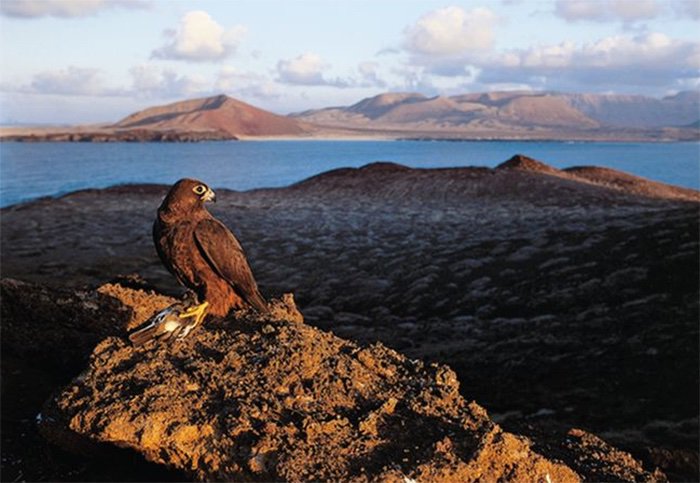 Internet comes and goes on the remote Isla de #Alegranza, but I& #39;ll try to share experiences in this thread over nxt 2.5 months. ¡Vamos!https://abs.twimg.com/emoji/v2/... draggable="false" alt="👇" title="Rückhand Zeigefinger nach unten" aria-label="Emoji: Rückhand Zeigefinger nach unten"> #EF2019 #ornithology #movementecology [1/n]" title="Hey y& #39;all. In a few days I& #39;m off to Canary Islands for the 2019 Eleonora& #39;s Falcon #fieldwork!https://abs.twimg.com/emoji/v2/... draggable="false" alt="🤗" title="Umarmendes Gesicht" aria-label="Emoji: Umarmendes Gesicht">Internet comes and goes on the remote Isla de #Alegranza, but I& #39;ll try to share experiences in this thread over nxt 2.5 months. ¡Vamos!https://abs.twimg.com/emoji/v2/... draggable="false" alt="👇" title="Rückhand Zeigefinger nach unten" aria-label="Emoji: Rückhand Zeigefinger nach unten"> #EF2019 #ornithology #movementecology [1/n]" class="img-responsive" style="max-width:100%;"/>
Internet comes and goes on the remote Isla de #Alegranza, but I& #39;ll try to share experiences in this thread over nxt 2.5 months. ¡Vamos!https://abs.twimg.com/emoji/v2/... draggable="false" alt="👇" title="Rückhand Zeigefinger nach unten" aria-label="Emoji: Rückhand Zeigefinger nach unten"> #EF2019 #ornithology #movementecology [1/n]" title="Hey y& #39;all. In a few days I& #39;m off to Canary Islands for the 2019 Eleonora& #39;s Falcon #fieldwork!https://abs.twimg.com/emoji/v2/... draggable="false" alt="🤗" title="Umarmendes Gesicht" aria-label="Emoji: Umarmendes Gesicht">Internet comes and goes on the remote Isla de #Alegranza, but I& #39;ll try to share experiences in this thread over nxt 2.5 months. ¡Vamos!https://abs.twimg.com/emoji/v2/... draggable="false" alt="👇" title="Rückhand Zeigefinger nach unten" aria-label="Emoji: Rückhand Zeigefinger nach unten"> #EF2019 #ornithology #movementecology [1/n]" class="img-responsive" style="max-width:100%;"/>
![Before heading off, let me give a brief intro to the Canarian Eleonora& #39;s #Falcon project, our study site, and our objectives for this year. Because there is a lot of reasons why these gorgeous falcons provide a mighty interesting study system... #EF2019 [2/n] Before heading off, let me give a brief intro to the Canarian Eleonora& #39;s #Falcon project, our study site, and our objectives for this year. Because there is a lot of reasons why these gorgeous falcons provide a mighty interesting study system... #EF2019 [2/n]](https://pbs.twimg.com/media/EAGeCBmXkAYp9tI.jpg)
![Firstly, let& #39;s talk distribution. Eleonora& #39;s Falcons are colonial breeders. They mainly breed on islands across the #Mediterranean & off the coast of NW #Africa. The #CanaryIslands are thus the westernmost limit of their breeding range Map source: @BirdLife_News #EF2019 [3/n] Firstly, let& #39;s talk distribution. Eleonora& #39;s Falcons are colonial breeders. They mainly breed on islands across the #Mediterranean & off the coast of NW #Africa. The #CanaryIslands are thus the westernmost limit of their breeding range Map source: @BirdLife_News #EF2019 [3/n]](https://pbs.twimg.com/media/EAGeCvOXkAI5GhG.png)
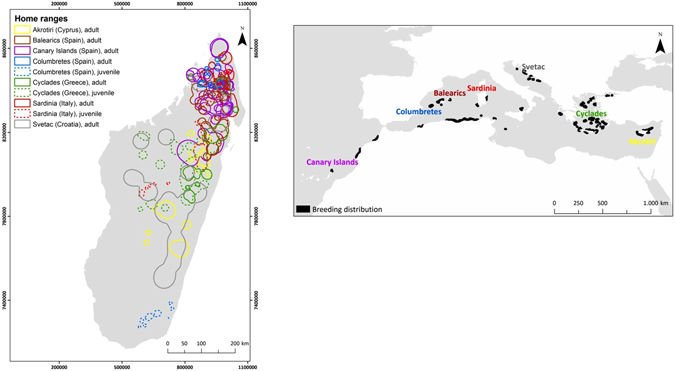 #EF2019 [4/n]" title="Despite their broad and patchy breeding distribution, all Eleonora& #39;s Falcons migrate to northern #Madagascar. This was shown beautifully by Christina Kassara who pooled tracking data from all across the breeding range.Full paper: https://www.nature.com/articles/... href="https://twtext.com//hashtag/EF2019"> #EF2019 [4/n]" class="img-responsive" style="max-width:100%;"/>
#EF2019 [4/n]" title="Despite their broad and patchy breeding distribution, all Eleonora& #39;s Falcons migrate to northern #Madagascar. This was shown beautifully by Christina Kassara who pooled tracking data from all across the breeding range.Full paper: https://www.nature.com/articles/... href="https://twtext.com//hashtag/EF2019"> #EF2019 [4/n]" class="img-responsive" style="max-width:100%;"/>
![Eleonora& #39;s Falcons thus engage in a spectacular trans-African #migration. But I won& #39;t go into detail abt that just yet. What& #39;s most important for us now is that the falcons are back near the colonies and will start laying any day...Map: unpublished #UvABiTS data #EF2019 [5/n] Eleonora& #39;s Falcons thus engage in a spectacular trans-African #migration. But I won& #39;t go into detail abt that just yet. What& #39;s most important for us now is that the falcons are back near the colonies and will start laying any day...Map: unpublished #UvABiTS data #EF2019 [5/n]](https://pbs.twimg.com/media/EAGeDs6W4AA9E25.jpg)
![In the Canary Islands, Eleonora& #39;s Falcons only breed on the uninhabited islets of the #Chinijo archipelago north of #Lanzarote: Roque del Este, Roque del Oeste, Montaña Clara and #Alegranza. Although historic data is scant, the pop. seems stable at ca. 290 pairs. #EF2019 [6/n] In the Canary Islands, Eleonora& #39;s Falcons only breed on the uninhabited islets of the #Chinijo archipelago north of #Lanzarote: Roque del Este, Roque del Oeste, Montaña Clara and #Alegranza. Although historic data is scant, the pop. seems stable at ca. 290 pairs. #EF2019 [6/n]](https://pbs.twimg.com/media/EAGeEU2WwAAVXvG.jpg)
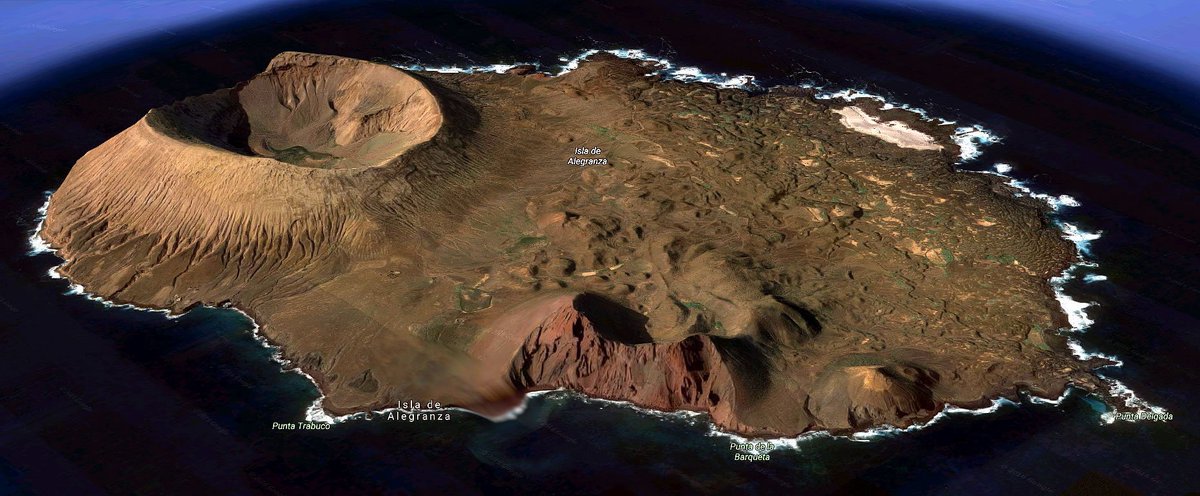 #EF2019 [7/n]" title="About half the #Chinijo pop of Eleonora& #39;s Falcon lives on Isla de #Alegranza, also our main study site. We& #39;ll spend much of the coming 2.5 mths walking up and down the craters on this relatively barren island of 10.2 sq km. I feel tiny and insignificant already...https://abs.twimg.com/emoji/v2/... draggable="false" alt="😅" title="Lächelndes Gesicht mit offenem Mund und Angstschweiß" aria-label="Emoji: Lächelndes Gesicht mit offenem Mund und Angstschweiß"> #EF2019 [7/n]" class="img-responsive" style="max-width:100%;"/>
#EF2019 [7/n]" title="About half the #Chinijo pop of Eleonora& #39;s Falcon lives on Isla de #Alegranza, also our main study site. We& #39;ll spend much of the coming 2.5 mths walking up and down the craters on this relatively barren island of 10.2 sq km. I feel tiny and insignificant already...https://abs.twimg.com/emoji/v2/... draggable="false" alt="😅" title="Lächelndes Gesicht mit offenem Mund und Angstschweiß" aria-label="Emoji: Lächelndes Gesicht mit offenem Mund und Angstschweiß"> #EF2019 [7/n]" class="img-responsive" style="max-width:100%;"/>
![But why do Eleonora& #39;s Falcons come all the way from Madagascar to breed here? And why so late? Well, even though the falcons hunt insects most of the year, they can target other, more rewarding aerial prey here: migrant #songbirds en route to Africa! #EF2019 [8/n] But why do Eleonora& #39;s Falcons come all the way from Madagascar to breed here? And why so late? Well, even though the falcons hunt insects most of the year, they can target other, more rewarding aerial prey here: migrant #songbirds en route to Africa! #EF2019 [8/n]](https://pbs.twimg.com/media/EAGeFs8WsAE4Zmk.jpg)
![Songbirds usually migrate at night to avoid predators. But many are still out at sea by dawn, making them easy targets for hungry falcons. Eleonora& #39;s Falcons have organised their entire annual cycle in order to exploit this massive seasonal food bonanza. #EF2019 [9/n] Songbirds usually migrate at night to avoid predators. But many are still out at sea by dawn, making them easy targets for hungry falcons. Eleonora& #39;s Falcons have organised their entire annual cycle in order to exploit this massive seasonal food bonanza. #EF2019 [9/n]](https://pbs.twimg.com/media/EAGeGSSX4AILPWi.jpg)
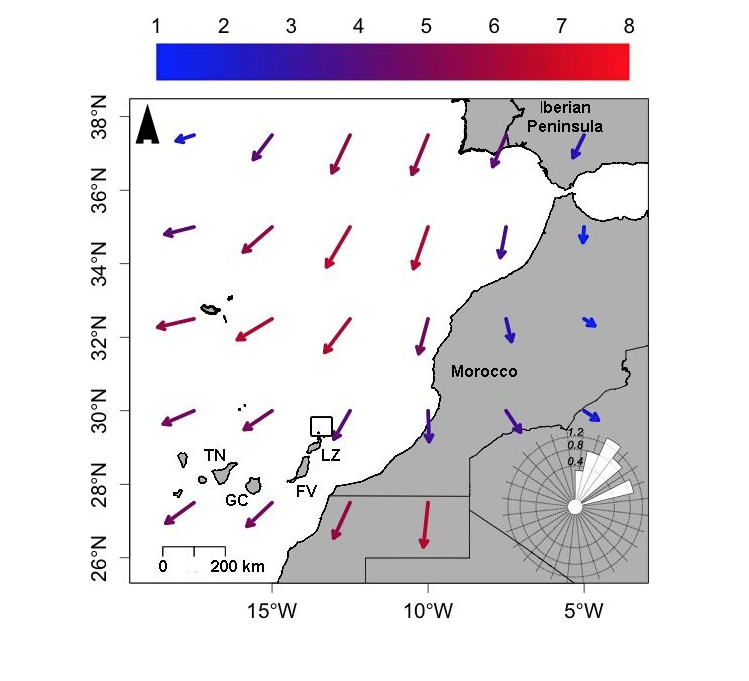 #EF2019 [10/n]" title="But wait there& #39;s more! Because while Eleonora& #39;s Falcons in the Mediterranean likely enjoy a steady supply of songbirds all season, falcons in the #Chinijo depend on NE trade winds to blow migrants out to the Atlantic Ocean. Source: https://royalsocietypublishing.org/doi/abs/1... href="https://twtext.com//hashtag/EF2019"> #EF2019 [10/n]" class="img-responsive" style="max-width:100%;"/>
#EF2019 [10/n]" title="But wait there& #39;s more! Because while Eleonora& #39;s Falcons in the Mediterranean likely enjoy a steady supply of songbirds all season, falcons in the #Chinijo depend on NE trade winds to blow migrants out to the Atlantic Ocean. Source: https://royalsocietypublishing.org/doi/abs/1... href="https://twtext.com//hashtag/EF2019"> #EF2019 [10/n]" class="img-responsive" style="max-width:100%;"/>
![So it seems the falcons can breed on #CanaryIslands bc NE trade winds provide a reliable supply of migrant songbird prey. However, some yrs winds don& #39;t blow for several days and females start cannibalising each other& #39;s chicks, so that the breeding season is lost. #EF2019 [11/n] So it seems the falcons can breed on #CanaryIslands bc NE trade winds provide a reliable supply of migrant songbird prey. However, some yrs winds don& #39;t blow for several days and females start cannibalising each other& #39;s chicks, so that the breeding season is lost. #EF2019 [11/n]](https://pbs.twimg.com/media/EAGeHeZWwAM90hI.jpg)
![These boom-bust dynamics, controlled by climate-dependent winds, are a topic of major interest in the project, and also one of the reasons we track hunting behaviour of adult falcons with #UvABiTS GPS-trackers from @IBED_UvA. #EF2019 [12/n] These boom-bust dynamics, controlled by climate-dependent winds, are a topic of major interest in the project, and also one of the reasons we track hunting behaviour of adult falcons with #UvABiTS GPS-trackers from @IBED_UvA. #EF2019 [12/n]](https://pbs.twimg.com/media/EAGeIA9XsAAhu_K.jpg)
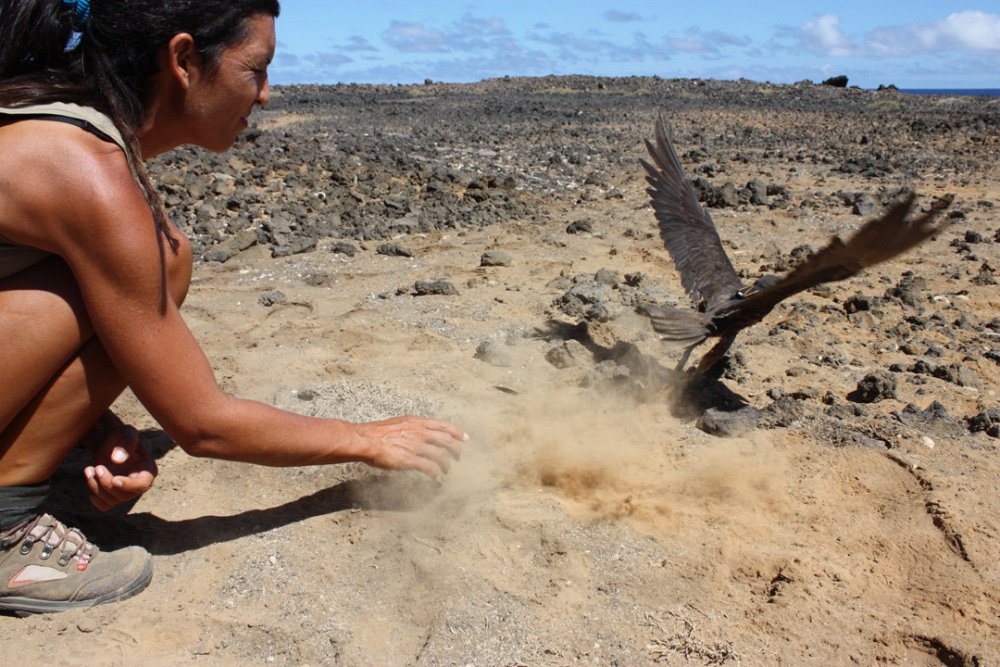
![Just landed in Lanzarote. Seems like we& #39;ll go to Alegranza tomorrow late afternoon ... Stay tuned! #EF2019 [15/n] Just landed in Lanzarote. Seems like we& #39;ll go to Alegranza tomorrow late afternoon ... Stay tuned! #EF2019 [15/n]](https://pbs.twimg.com/media/EAQ0zStXUAAm4my.jpg)
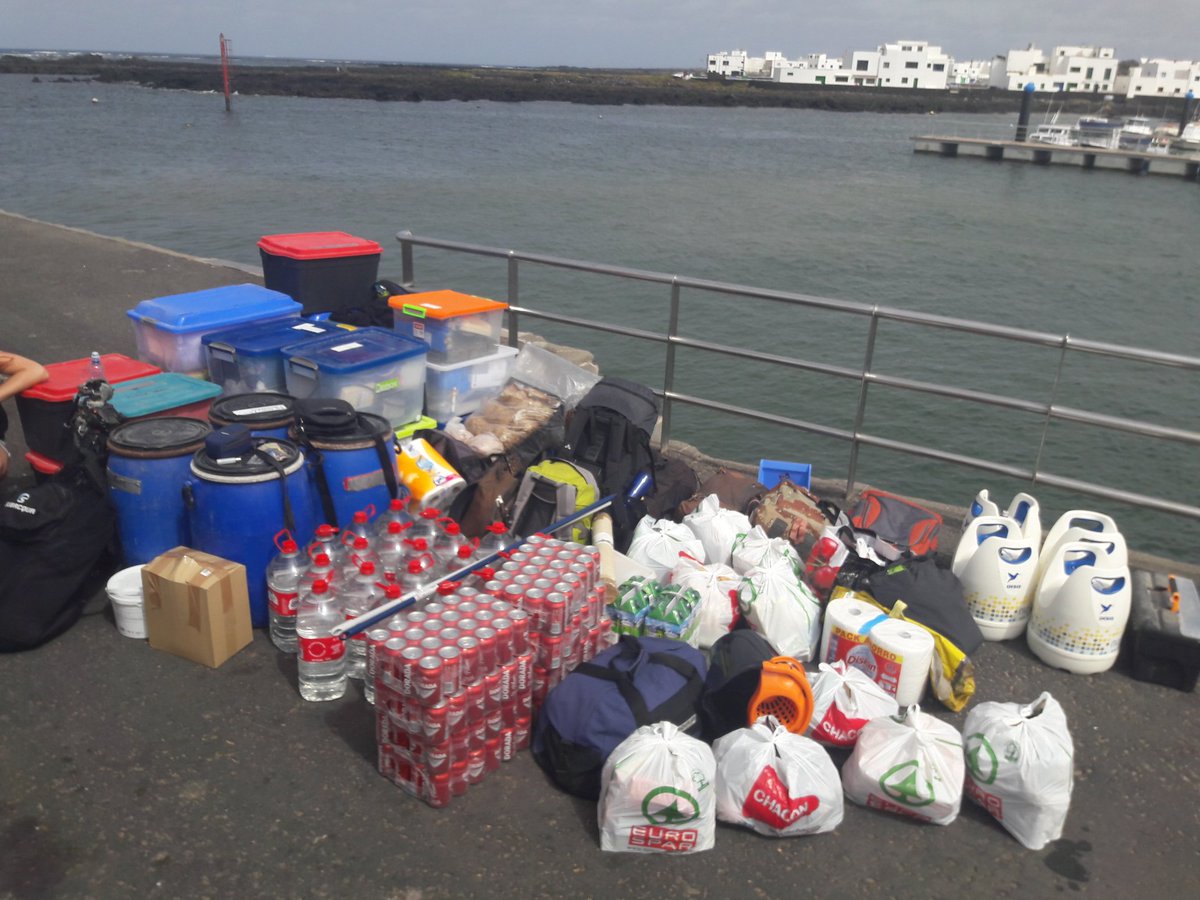 #EF2019 [16/n]" title="Now all we need is a boat ... https://abs.twimg.com/emoji/v2/... draggable="false" alt="🤗" title="Umarmendes Gesicht" aria-label="Emoji: Umarmendes Gesicht"> #EF2019 [16/n]" class="img-responsive" style="max-width:100%;"/>
#EF2019 [16/n]" title="Now all we need is a boat ... https://abs.twimg.com/emoji/v2/... draggable="false" alt="🤗" title="Umarmendes Gesicht" aria-label="Emoji: Umarmendes Gesicht"> #EF2019 [16/n]" class="img-responsive" style="max-width:100%;"/>
 . Greeted by 4 falcons upon arrival. Now setting up camp. Good to be here! #EF2019 [17/n]" title="Woohoo! We made landfall on Alegranza. Fortunately the Spanish flag being torn of the boat was not a bad omen and contrary to last yr I didnt engage in involuntary shearwater chumming https://abs.twimg.com/emoji/v2/... draggable="false" alt="😆" title="Lächelndes Gesicht mit geöffnetem Mund und fest verschlossenen Augen" aria-label="Emoji: Lächelndes Gesicht mit geöffnetem Mund und fest verschlossenen Augen">. Greeted by 4 falcons upon arrival. Now setting up camp. Good to be here! #EF2019 [17/n]">
. Greeted by 4 falcons upon arrival. Now setting up camp. Good to be here! #EF2019 [17/n]" title="Woohoo! We made landfall on Alegranza. Fortunately the Spanish flag being torn of the boat was not a bad omen and contrary to last yr I didnt engage in involuntary shearwater chumming https://abs.twimg.com/emoji/v2/... draggable="false" alt="😆" title="Lächelndes Gesicht mit geöffnetem Mund und fest verschlossenen Augen" aria-label="Emoji: Lächelndes Gesicht mit geöffnetem Mund und fest verschlossenen Augen">. Greeted by 4 falcons upon arrival. Now setting up camp. Good to be here! #EF2019 [17/n]">
 . Greeted by 4 falcons upon arrival. Now setting up camp. Good to be here! #EF2019 [17/n]" title="Woohoo! We made landfall on Alegranza. Fortunately the Spanish flag being torn of the boat was not a bad omen and contrary to last yr I didnt engage in involuntary shearwater chumming https://abs.twimg.com/emoji/v2/... draggable="false" alt="😆" title="Lächelndes Gesicht mit geöffnetem Mund und fest verschlossenen Augen" aria-label="Emoji: Lächelndes Gesicht mit geöffnetem Mund und fest verschlossenen Augen">. Greeted by 4 falcons upon arrival. Now setting up camp. Good to be here! #EF2019 [17/n]">
. Greeted by 4 falcons upon arrival. Now setting up camp. Good to be here! #EF2019 [17/n]" title="Woohoo! We made landfall on Alegranza. Fortunately the Spanish flag being torn of the boat was not a bad omen and contrary to last yr I didnt engage in involuntary shearwater chumming https://abs.twimg.com/emoji/v2/... draggable="false" alt="😆" title="Lächelndes Gesicht mit geöffnetem Mund und fest verschlossenen Augen" aria-label="Emoji: Lächelndes Gesicht mit geöffnetem Mund und fest verschlossenen Augen">. Greeted by 4 falcons upon arrival. Now setting up camp. Good to be here! #EF2019 [17/n]">
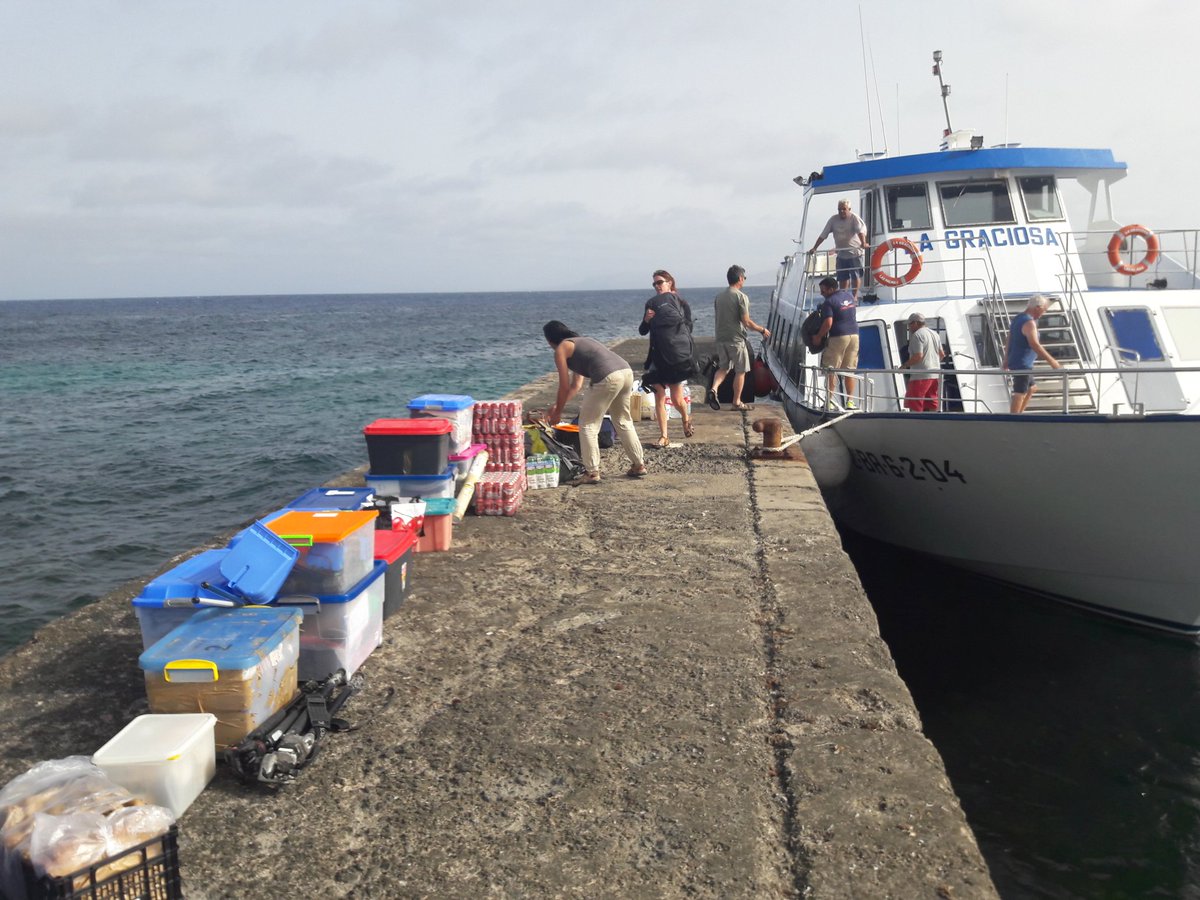 . Greeted by 4 falcons upon arrival. Now setting up camp. Good to be here! #EF2019 [17/n]" title="Woohoo! We made landfall on Alegranza. Fortunately the Spanish flag being torn of the boat was not a bad omen and contrary to last yr I didnt engage in involuntary shearwater chumming https://abs.twimg.com/emoji/v2/... draggable="false" alt="😆" title="Lächelndes Gesicht mit geöffnetem Mund und fest verschlossenen Augen" aria-label="Emoji: Lächelndes Gesicht mit geöffnetem Mund und fest verschlossenen Augen">. Greeted by 4 falcons upon arrival. Now setting up camp. Good to be here! #EF2019 [17/n]">
. Greeted by 4 falcons upon arrival. Now setting up camp. Good to be here! #EF2019 [17/n]" title="Woohoo! We made landfall on Alegranza. Fortunately the Spanish flag being torn of the boat was not a bad omen and contrary to last yr I didnt engage in involuntary shearwater chumming https://abs.twimg.com/emoji/v2/... draggable="false" alt="😆" title="Lächelndes Gesicht mit geöffnetem Mund und fest verschlossenen Augen" aria-label="Emoji: Lächelndes Gesicht mit geöffnetem Mund und fest verschlossenen Augen">. Greeted by 4 falcons upon arrival. Now setting up camp. Good to be here! #EF2019 [17/n]">
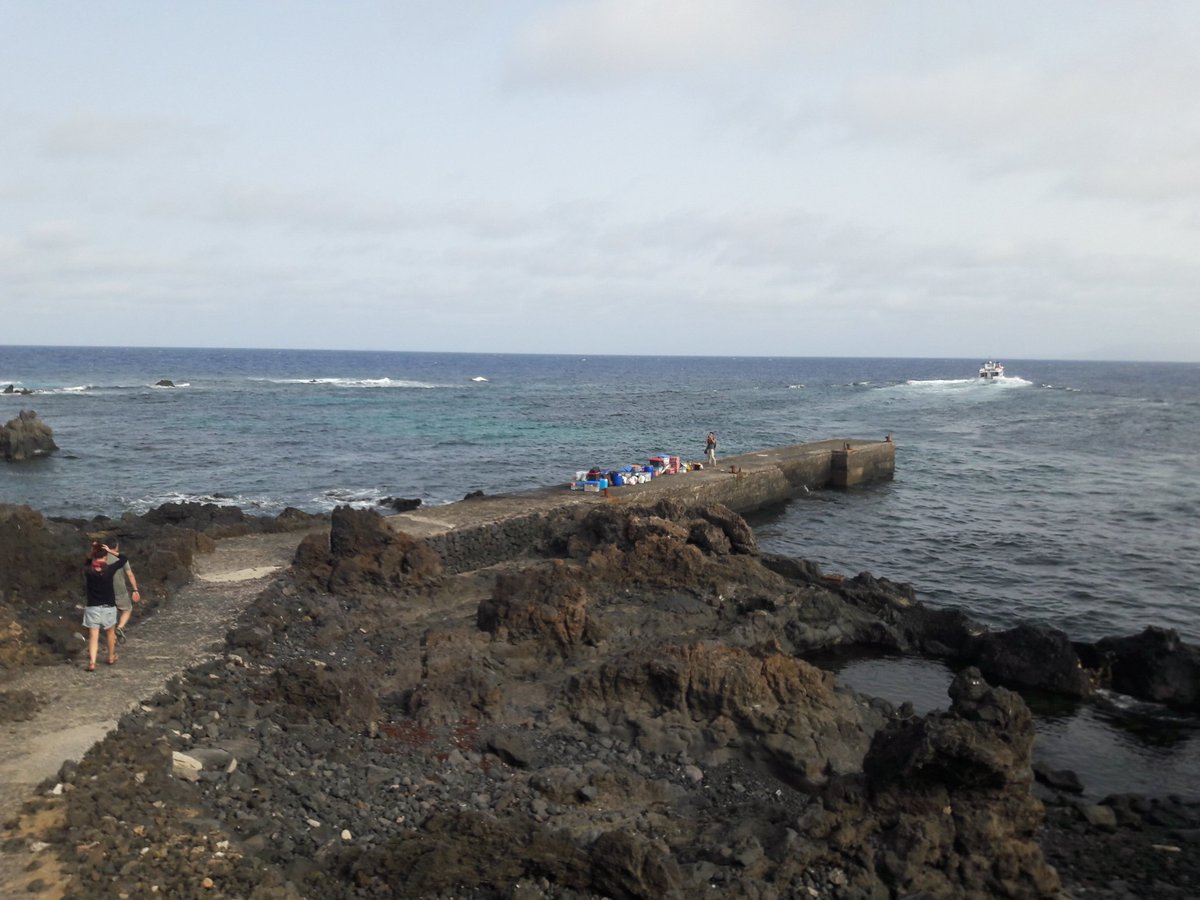 . Greeted by 4 falcons upon arrival. Now setting up camp. Good to be here! #EF2019 [17/n]" title="Woohoo! We made landfall on Alegranza. Fortunately the Spanish flag being torn of the boat was not a bad omen and contrary to last yr I didnt engage in involuntary shearwater chumming https://abs.twimg.com/emoji/v2/... draggable="false" alt="😆" title="Lächelndes Gesicht mit geöffnetem Mund und fest verschlossenen Augen" aria-label="Emoji: Lächelndes Gesicht mit geöffnetem Mund und fest verschlossenen Augen">. Greeted by 4 falcons upon arrival. Now setting up camp. Good to be here! #EF2019 [17/n]">
. Greeted by 4 falcons upon arrival. Now setting up camp. Good to be here! #EF2019 [17/n]" title="Woohoo! We made landfall on Alegranza. Fortunately the Spanish flag being torn of the boat was not a bad omen and contrary to last yr I didnt engage in involuntary shearwater chumming https://abs.twimg.com/emoji/v2/... draggable="false" alt="😆" title="Lächelndes Gesicht mit geöffnetem Mund und fest verschlossenen Augen" aria-label="Emoji: Lächelndes Gesicht mit geöffnetem Mund und fest verschlossenen Augen">. Greeted by 4 falcons upon arrival. Now setting up camp. Good to be here! #EF2019 [17/n]">
![Punto Delgado in the southeast corner of Alegranza. This is the place we call home for the nxt few months. No shower for us. But who needs one when you can jump in the ocean every day #EF2019 [18/n] Punto Delgado in the southeast corner of Alegranza. This is the place we call home for the nxt few months. No shower for us. But who needs one when you can jump in the ocean every day #EF2019 [18/n]](https://pbs.twimg.com/media/EAZyxZNXsAMLQCE.jpg)
![This afternoon we set up our 2nd #UvABiTS base station and immediately a 4th bird made contact. 13 more to go! We also installed camera traps at the only water source on Alegranza. Falcons drink there and wt cameras we can read colour rings for survival analyses. #EF2019 [20/n] This afternoon we set up our 2nd #UvABiTS base station and immediately a 4th bird made contact. 13 more to go! We also installed camera traps at the only water source on Alegranza. Falcons drink there and wt cameras we can read colour rings for survival analyses. #EF2019 [20/n]](https://pbs.twimg.com/media/EAbJTWGW4AcTpAf.jpg)
![This afternoon we set up our 2nd #UvABiTS base station and immediately a 4th bird made contact. 13 more to go! We also installed camera traps at the only water source on Alegranza. Falcons drink there and wt cameras we can read colour rings for survival analyses. #EF2019 [20/n] This afternoon we set up our 2nd #UvABiTS base station and immediately a 4th bird made contact. 13 more to go! We also installed camera traps at the only water source on Alegranza. Falcons drink there and wt cameras we can read colour rings for survival analyses. #EF2019 [20/n]](https://pbs.twimg.com/media/EAbJUmDWsAYvDHm.jpg)
![Good morning tweetiepies! Today we& #39;ll head out to install #UvABiTS antennes on various hilltops across #Alegranza. That should help us get in contact with a bunch of GPS-tagged falcons. Exciting times. Stay tuned and enjoy your weekend! #EF2019 [21/n] Good morning tweetiepies! Today we& #39;ll head out to install #UvABiTS antennes on various hilltops across #Alegranza. That should help us get in contact with a bunch of GPS-tagged falcons. Exciting times. Stay tuned and enjoy your weekend! #EF2019 [21/n]](https://pbs.twimg.com/media/EAd9g1sXoAAtH7T.jpg)
 Another antenna is being installed at other end of the crater now https://abs.twimg.com/emoji/v2/... draggable="false" alt="🤘" title="Heavy-Metal-Handzeichen" aria-label="Emoji: Heavy-Metal-Handzeichen"> #EF2019 [22/n]" title="Antenna Caldera is up and running. 8 falcons made contact by now. https://abs.twimg.com/emoji/v2/... draggable="false" alt="😊" title="Lächelndes Gesicht mit lächelnden Augen" aria-label="Emoji: Lächelndes Gesicht mit lächelnden Augen"> Another antenna is being installed at other end of the crater now https://abs.twimg.com/emoji/v2/... draggable="false" alt="🤘" title="Heavy-Metal-Handzeichen" aria-label="Emoji: Heavy-Metal-Handzeichen"> #EF2019 [22/n]" class="img-responsive" style="max-width:100%;"/>
Another antenna is being installed at other end of the crater now https://abs.twimg.com/emoji/v2/... draggable="false" alt="🤘" title="Heavy-Metal-Handzeichen" aria-label="Emoji: Heavy-Metal-Handzeichen"> #EF2019 [22/n]" title="Antenna Caldera is up and running. 8 falcons made contact by now. https://abs.twimg.com/emoji/v2/... draggable="false" alt="😊" title="Lächelndes Gesicht mit lächelnden Augen" aria-label="Emoji: Lächelndes Gesicht mit lächelnden Augen"> Another antenna is being installed at other end of the crater now https://abs.twimg.com/emoji/v2/... draggable="false" alt="🤘" title="Heavy-Metal-Handzeichen" aria-label="Emoji: Heavy-Metal-Handzeichen"> #EF2019 [22/n]" class="img-responsive" style="max-width:100%;"/>
 https://abs.twimg.com/emoji/v2/... draggable="false" alt="😊" title="Lächelndes Gesicht mit lächelnden Augen" aria-label="Emoji: Lächelndes Gesicht mit lächelnden Augen"> #EF2019 [23/n]" title="Just got back from installing an #UvABiTS on Lobos mountain, my favourite mtn, with our awesome team leader Laura. Meanwhile Walo installed another on Morro de Rapadura. Marina kept an eye on base station to ensure network is functioning. 9 GPS falcons now! https://abs.twimg.com/emoji/v2/... draggable="false" alt="😍" title="Lächelndes Gesicht mit herzförmigen Augen" aria-label="Emoji: Lächelndes Gesicht mit herzförmigen Augen">https://abs.twimg.com/emoji/v2/... draggable="false" alt="😊" title="Lächelndes Gesicht mit lächelnden Augen" aria-label="Emoji: Lächelndes Gesicht mit lächelnden Augen"> #EF2019 [23/n]" class="img-responsive" style="max-width:100%;"/>
https://abs.twimg.com/emoji/v2/... draggable="false" alt="😊" title="Lächelndes Gesicht mit lächelnden Augen" aria-label="Emoji: Lächelndes Gesicht mit lächelnden Augen"> #EF2019 [23/n]" title="Just got back from installing an #UvABiTS on Lobos mountain, my favourite mtn, with our awesome team leader Laura. Meanwhile Walo installed another on Morro de Rapadura. Marina kept an eye on base station to ensure network is functioning. 9 GPS falcons now! https://abs.twimg.com/emoji/v2/... draggable="false" alt="😍" title="Lächelndes Gesicht mit herzförmigen Augen" aria-label="Emoji: Lächelndes Gesicht mit herzförmigen Augen">https://abs.twimg.com/emoji/v2/... draggable="false" alt="😊" title="Lächelndes Gesicht mit lächelnden Augen" aria-label="Emoji: Lächelndes Gesicht mit lächelnden Augen"> #EF2019 [23/n]" class="img-responsive" style="max-width:100%;"/>
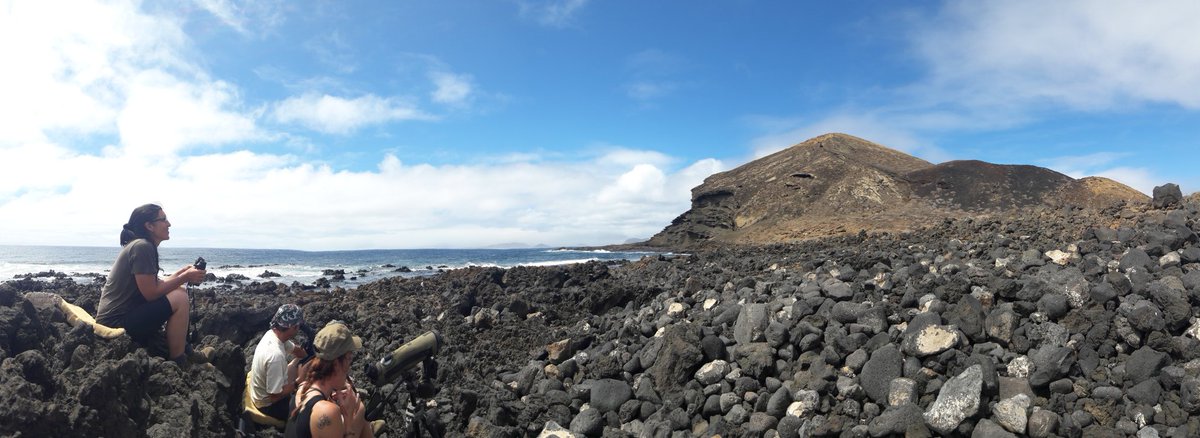 #EF2019 [25/n]" title="Censussing Rapadura colony this morning. Historically abt 20 pairs of falcons here, 8 of which on this side. So far 2 nests with lots of activity. We& #39;ll find more for sure. Just a matter of patience. Lots of patience https://abs.twimg.com/emoji/v2/... draggable="false" alt="😉" title="Zwinkerndes Gesicht" aria-label="Emoji: Zwinkerndes Gesicht"> #EF2019 [25/n]" class="img-responsive" style="max-width:100%;"/>
#EF2019 [25/n]" title="Censussing Rapadura colony this morning. Historically abt 20 pairs of falcons here, 8 of which on this side. So far 2 nests with lots of activity. We& #39;ll find more for sure. Just a matter of patience. Lots of patience https://abs.twimg.com/emoji/v2/... draggable="false" alt="😉" title="Zwinkerndes Gesicht" aria-label="Emoji: Zwinkerndes Gesicht"> #EF2019 [25/n]" class="img-responsive" style="max-width:100%;"/>
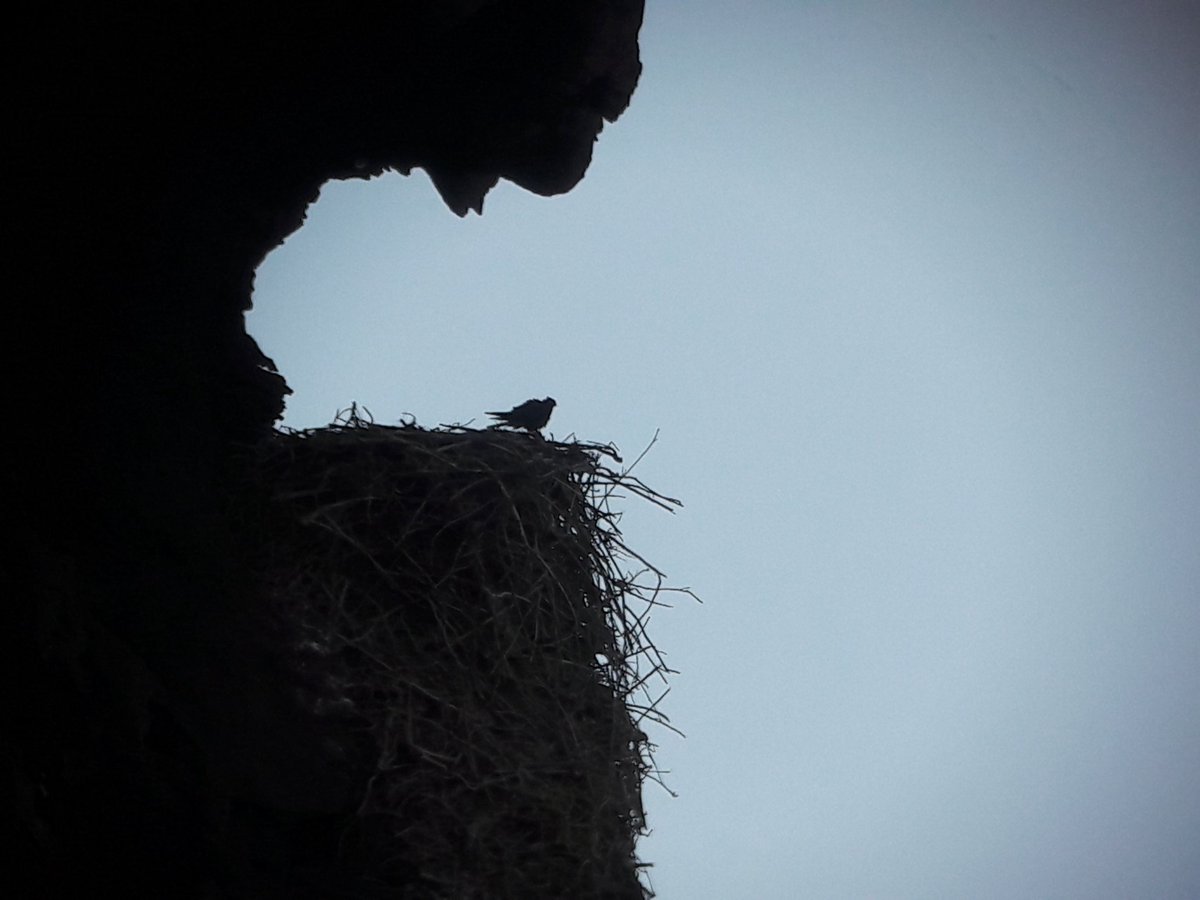 #EF2019 [27/n]" title="Ended todays census with views of an Eleonara& #39;s Falcon preening on an Osprey nest. https://abs.twimg.com/emoji/v2/... draggable="false" alt="😍" title="Lächelndes Gesicht mit herzförmigen Augen" aria-label="Emoji: Lächelndes Gesicht mit herzförmigen Augen"> #EF2019 [27/n]" class="img-responsive" style="max-width:100%;"/>
#EF2019 [27/n]" title="Ended todays census with views of an Eleonara& #39;s Falcon preening on an Osprey nest. https://abs.twimg.com/emoji/v2/... draggable="false" alt="😍" title="Lächelndes Gesicht mit herzförmigen Augen" aria-label="Emoji: Lächelndes Gesicht mit herzförmigen Augen"> #EF2019 [27/n]" class="img-responsive" style="max-width:100%;"/>
![Out censussing Rapadura again today. Lot& #39;s of activity helps to identify nest sites and territories. In next few weeks we& #39;ll get a rough map of all the colonies before we visit the nests, determine clutch sizes and install nest cameras to read colour rings. #EF2019 [28/n] Out censussing Rapadura again today. Lot& #39;s of activity helps to identify nest sites and territories. In next few weeks we& #39;ll get a rough map of all the colonies before we visit the nests, determine clutch sizes and install nest cameras to read colour rings. #EF2019 [28/n]](https://pbs.twimg.com/media/EAo7zedX4AEwPSk.jpg)
![Tracks of Stone Curlew on the beach near our camp site. Have not seen or heard them yet. But we are still to visit the best sites for these species. #EF2019 [29/n] Tracks of Stone Curlew on the beach near our camp site. Have not seen or heard them yet. But we are still to visit the best sites for these species. #EF2019 [29/n]](https://pbs.twimg.com/media/EApzBSMW4AABVvP.jpg)
 . We got some great pics like this flight shot of a black morph individual. Also a Barbary Falcon (2nd pic) and lots of Long-eared and Barn Owl. #EF2019 [31/n]" title="We could ID 24 Eleonora& #39;s Falcons from their colour rings on camera trap footage. Oldest was ringed as chick in 2007 https://abs.twimg.com/emoji/v2/... draggable="false" alt="😍" title="Lächelndes Gesicht mit herzförmigen Augen" aria-label="Emoji: Lächelndes Gesicht mit herzförmigen Augen">. We got some great pics like this flight shot of a black morph individual. Also a Barbary Falcon (2nd pic) and lots of Long-eared and Barn Owl. #EF2019 [31/n]">
. We got some great pics like this flight shot of a black morph individual. Also a Barbary Falcon (2nd pic) and lots of Long-eared and Barn Owl. #EF2019 [31/n]" title="We could ID 24 Eleonora& #39;s Falcons from their colour rings on camera trap footage. Oldest was ringed as chick in 2007 https://abs.twimg.com/emoji/v2/... draggable="false" alt="😍" title="Lächelndes Gesicht mit herzförmigen Augen" aria-label="Emoji: Lächelndes Gesicht mit herzförmigen Augen">. We got some great pics like this flight shot of a black morph individual. Also a Barbary Falcon (2nd pic) and lots of Long-eared and Barn Owl. #EF2019 [31/n]">
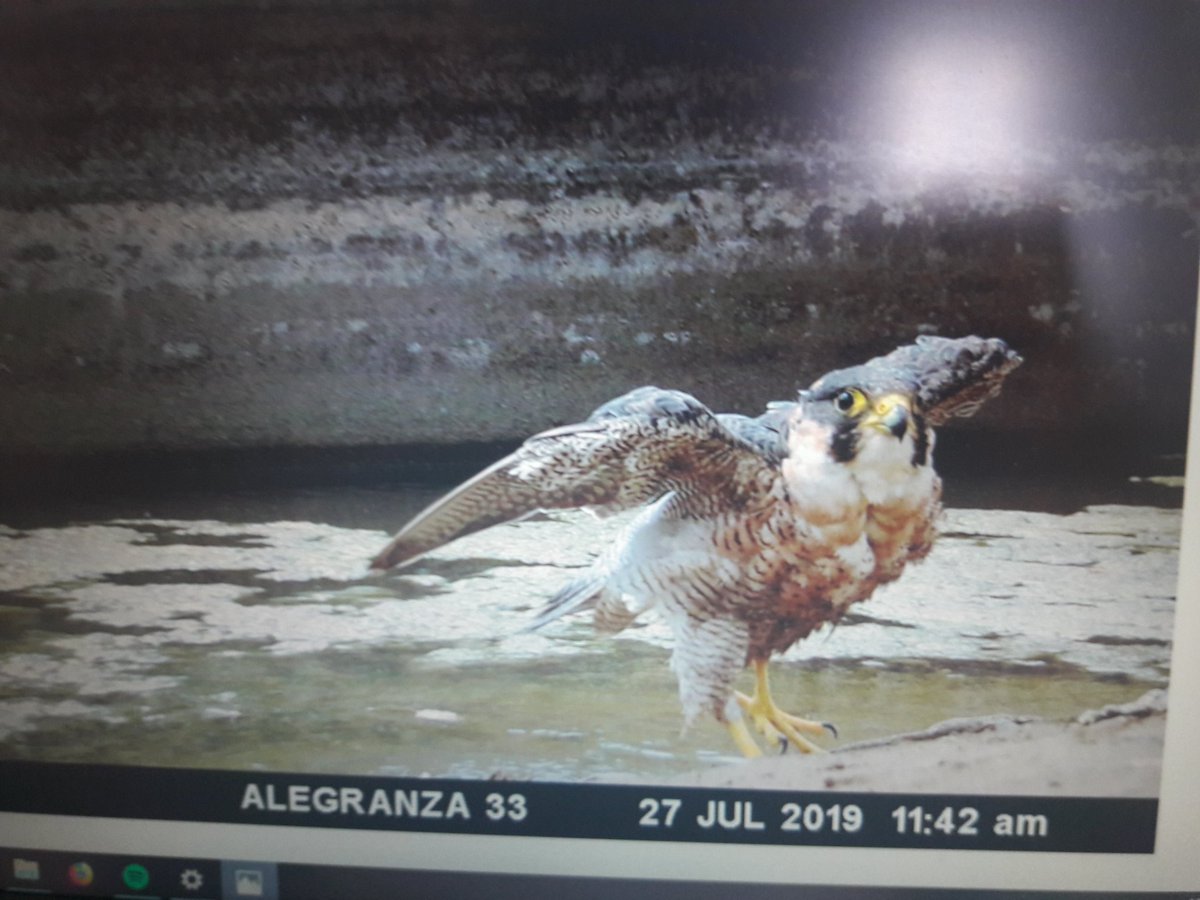 . We got some great pics like this flight shot of a black morph individual. Also a Barbary Falcon (2nd pic) and lots of Long-eared and Barn Owl. #EF2019 [31/n]" title="We could ID 24 Eleonora& #39;s Falcons from their colour rings on camera trap footage. Oldest was ringed as chick in 2007 https://abs.twimg.com/emoji/v2/... draggable="false" alt="😍" title="Lächelndes Gesicht mit herzförmigen Augen" aria-label="Emoji: Lächelndes Gesicht mit herzförmigen Augen">. We got some great pics like this flight shot of a black morph individual. Also a Barbary Falcon (2nd pic) and lots of Long-eared and Barn Owl. #EF2019 [31/n]">
. We got some great pics like this flight shot of a black morph individual. Also a Barbary Falcon (2nd pic) and lots of Long-eared and Barn Owl. #EF2019 [31/n]" title="We could ID 24 Eleonora& #39;s Falcons from their colour rings on camera trap footage. Oldest was ringed as chick in 2007 https://abs.twimg.com/emoji/v2/... draggable="false" alt="😍" title="Lächelndes Gesicht mit herzförmigen Augen" aria-label="Emoji: Lächelndes Gesicht mit herzförmigen Augen">. We got some great pics like this flight shot of a black morph individual. Also a Barbary Falcon (2nd pic) and lots of Long-eared and Barn Owl. #EF2019 [31/n]">
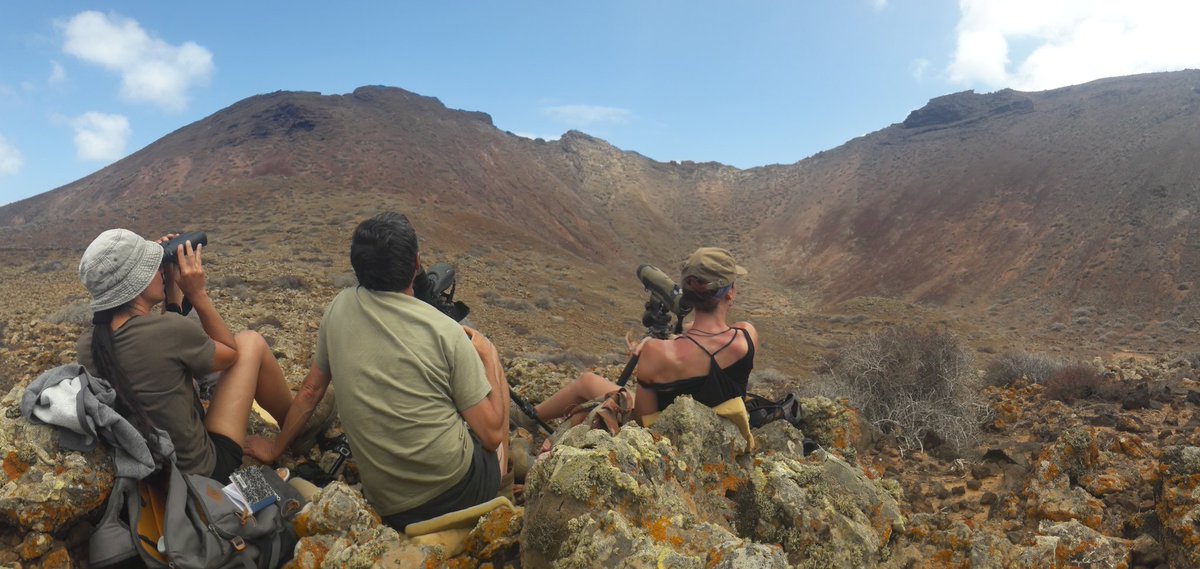 . #EF2019 [32/n]" title="As the sea storm continued we surveyed Mount Lobos today. Spectacular start with many falcons chasing Ravens, and vice versa. After some hours males arrived wt flycatchers and other prey. We located 8 nest caves, of which 2 new nest sites found by yours truly https://abs.twimg.com/emoji/v2/... draggable="false" alt="😎" title="Lächelndes Gesicht mit Sonnenbrille" aria-label="Emoji: Lächelndes Gesicht mit Sonnenbrille">. #EF2019 [32/n]" class="img-responsive" style="max-width:100%;"/>
. #EF2019 [32/n]" title="As the sea storm continued we surveyed Mount Lobos today. Spectacular start with many falcons chasing Ravens, and vice versa. After some hours males arrived wt flycatchers and other prey. We located 8 nest caves, of which 2 new nest sites found by yours truly https://abs.twimg.com/emoji/v2/... draggable="false" alt="😎" title="Lächelndes Gesicht mit Sonnenbrille" aria-label="Emoji: Lächelndes Gesicht mit Sonnenbrille">. #EF2019 [32/n]" class="img-responsive" style="max-width:100%;"/>
![While censussing falcons we checked a #BarnOwl nest and found many remains of their main prey on Alegranza: Buwlers and Storm #Petrels. 100s of petrels are consumed by #owls each yr. Also some Eleonora& #39;s Falcons are specialist petrel hunters. More on that later ... #EF2019 [33/n] While censussing falcons we checked a #BarnOwl nest and found many remains of their main prey on Alegranza: Buwlers and Storm #Petrels. 100s of petrels are consumed by #owls each yr. Also some Eleonora& #39;s Falcons are specialist petrel hunters. More on that later ... #EF2019 [33/n]](https://pbs.twimg.com/media/EA0uEkTXUAAT0SH.jpg)
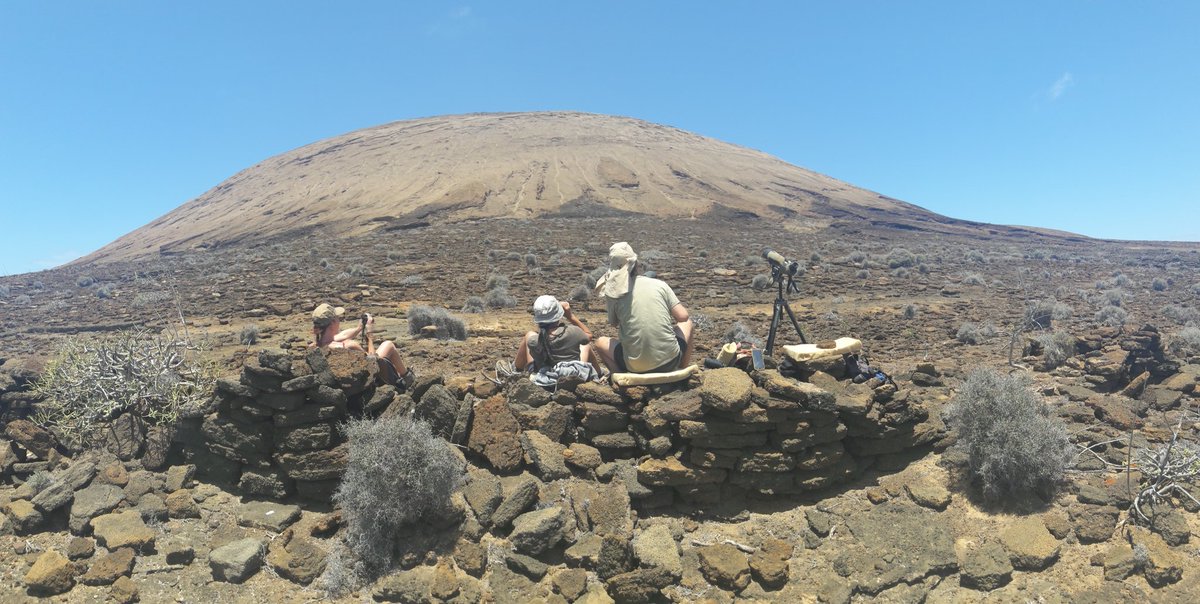 #EF2019 [34/n]" title="Today Laura, Marina, Walo and I are working on the hardest colony to census on Alegranza: the southern slope of the Caldera. Mostly bare rock with few landmarks and many little barancos and rocks for falcons to hide behind. Wish us luck! https://abs.twimg.com/emoji/v2/... draggable="false" alt="🤞" title="Crossed fingers" aria-label="Emoji: Crossed fingers"> #EF2019 [34/n]" class="img-responsive" style="max-width:100%;"/>
#EF2019 [34/n]" title="Today Laura, Marina, Walo and I are working on the hardest colony to census on Alegranza: the southern slope of the Caldera. Mostly bare rock with few landmarks and many little barancos and rocks for falcons to hide behind. Wish us luck! https://abs.twimg.com/emoji/v2/... draggable="false" alt="🤞" title="Crossed fingers" aria-label="Emoji: Crossed fingers"> #EF2019 [34/n]" class="img-responsive" style="max-width:100%;"/>
![After 2 days of Twitter silence another update from Alegranza. Weather finally permitted a census of the east coast. This area is a bit of a ghetto, as many black morph males breed here, while the mountains are mostly occupied by pale males (no diff for females). #EF2019 [35/n] After 2 days of Twitter silence another update from Alegranza. Weather finally permitted a census of the east coast. This area is a bit of a ghetto, as many black morph males breed here, while the mountains are mostly occupied by pale males (no diff for females). #EF2019 [35/n]](https://pbs.twimg.com/media/EBJOBeFW4AY0SzT.jpg)
![Its not easy locating nest sites along the cliffs and between the basaltic rocks on the beaches, but we got 6 today. These are now monitored by camera traps to determine colour morphs of parents, and the identity of colour ringed birds. #EF2019 [38/n] Its not easy locating nest sites along the cliffs and between the basaltic rocks on the beaches, but we got 6 today. These are now monitored by camera traps to determine colour morphs of parents, and the identity of colour ringed birds. #EF2019 [38/n]](https://pbs.twimg.com/media/EBJT21JWsAAFcH9.jpg)
![Its not easy locating nest sites along the cliffs and between the basaltic rocks on the beaches, but we got 6 today. These are now monitored by camera traps to determine colour morphs of parents, and the identity of colour ringed birds. #EF2019 [38/n] Its not easy locating nest sites along the cliffs and between the basaltic rocks on the beaches, but we got 6 today. These are now monitored by camera traps to determine colour morphs of parents, and the identity of colour ringed birds. #EF2019 [38/n]](https://pbs.twimg.com/media/EBJT6NCXkAYW9-C.jpg)
![In short it was another great day innthe Eleonora& #39;s Falcon project, and the awesome landscape of Alegranza& #39;s east coast only made it better. #EF2019 [39/n] In short it was another great day innthe Eleonora& #39;s Falcon project, and the awesome landscape of Alegranza& #39;s east coast only made it better. #EF2019 [39/n]](https://pbs.twimg.com/media/EBJUtvWXkAE9A9T.jpg)
 #EF2019 [40/n]" title="Change of scenery after our coastal survey yesterday. We are now censussing the interior of the Caldera. Here all falcons breed on the east side (right side pic), in caves where they are sheltered from the relentless northeasterly winds. More updates tonight https://abs.twimg.com/emoji/v2/... draggable="false" alt="😉" title="Zwinkerndes Gesicht" aria-label="Emoji: Zwinkerndes Gesicht"> #EF2019 [40/n]" class="img-responsive" style="max-width:100%;"/>
#EF2019 [40/n]" title="Change of scenery after our coastal survey yesterday. We are now censussing the interior of the Caldera. Here all falcons breed on the east side (right side pic), in caves where they are sheltered from the relentless northeasterly winds. More updates tonight https://abs.twimg.com/emoji/v2/... draggable="false" alt="😉" title="Zwinkerndes Gesicht" aria-label="Emoji: Zwinkerndes Gesicht"> #EF2019 [40/n]" class="img-responsive" style="max-width:100%;"/>
![Back at base camp after a wonderful and entertaining census of Eleonora& #39;s Falcon inside the Caldera, Alegranza& #39;s main mountain. A humble 289m high, but still a spectacular work place, with the crater measuring about 1.1km in diameter. #EF2019 [41/n] Back at base camp after a wonderful and entertaining census of Eleonora& #39;s Falcon inside the Caldera, Alegranza& #39;s main mountain. A humble 289m high, but still a spectacular work place, with the crater measuring about 1.1km in diameter. #EF2019 [41/n]](https://pbs.twimg.com/media/EBOYY4oX4AYAtx6.jpg)
![Back at base camp after a wonderful and entertaining census of Eleonora& #39;s Falcon inside the Caldera, Alegranza& #39;s main mountain. A humble 289m high, but still a spectacular work place, with the crater measuring about 1.1km in diameter. #EF2019 [41/n] Back at base camp after a wonderful and entertaining census of Eleonora& #39;s Falcon inside the Caldera, Alegranza& #39;s main mountain. A humble 289m high, but still a spectacular work place, with the crater measuring about 1.1km in diameter. #EF2019 [41/n]](https://pbs.twimg.com/media/EBOYaj2W4AELZi2.jpg)
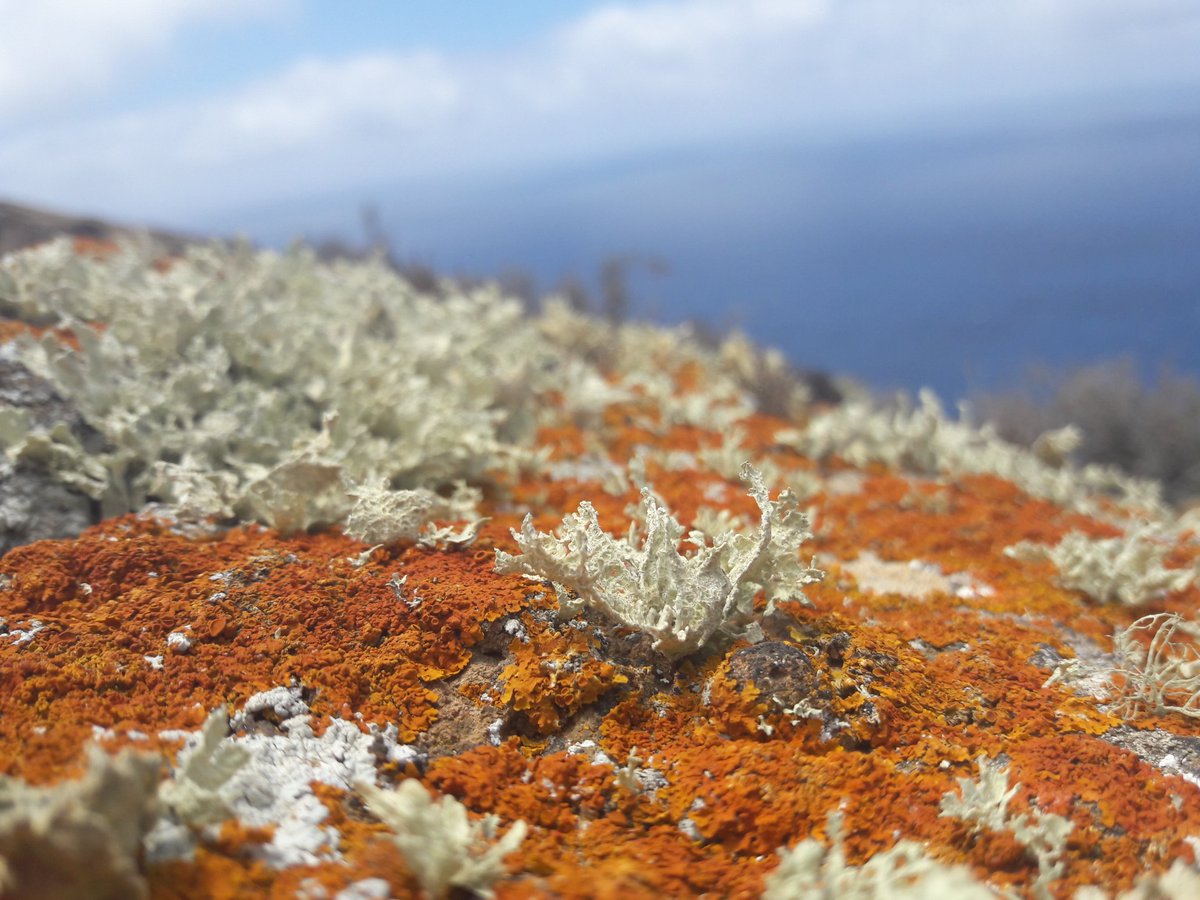 If anyone knows the little plant nxt to the lichen on the 3rd pic, please do let me know! https://abs.twimg.com/emoji/v2/... draggable="false" alt="😊" title="Lächelndes Gesicht mit lächelnden Augen" aria-label="Emoji: Lächelndes Gesicht mit lächelnden Augen"> #EF2019 [44/n]" title="Finally for today, just want to share some pics of the gorgeous #lichens and #Euphorbia shrubs that brighten up our long days in the field on rocky Alegranza. https://abs.twimg.com/emoji/v2/... draggable="false" alt="😍" title="Lächelndes Gesicht mit herzförmigen Augen" aria-label="Emoji: Lächelndes Gesicht mit herzförmigen Augen"> If anyone knows the little plant nxt to the lichen on the 3rd pic, please do let me know! https://abs.twimg.com/emoji/v2/... draggable="false" alt="😊" title="Lächelndes Gesicht mit lächelnden Augen" aria-label="Emoji: Lächelndes Gesicht mit lächelnden Augen"> #EF2019 [44/n]">
If anyone knows the little plant nxt to the lichen on the 3rd pic, please do let me know! https://abs.twimg.com/emoji/v2/... draggable="false" alt="😊" title="Lächelndes Gesicht mit lächelnden Augen" aria-label="Emoji: Lächelndes Gesicht mit lächelnden Augen"> #EF2019 [44/n]" title="Finally for today, just want to share some pics of the gorgeous #lichens and #Euphorbia shrubs that brighten up our long days in the field on rocky Alegranza. https://abs.twimg.com/emoji/v2/... draggable="false" alt="😍" title="Lächelndes Gesicht mit herzförmigen Augen" aria-label="Emoji: Lächelndes Gesicht mit herzförmigen Augen"> If anyone knows the little plant nxt to the lichen on the 3rd pic, please do let me know! https://abs.twimg.com/emoji/v2/... draggable="false" alt="😊" title="Lächelndes Gesicht mit lächelnden Augen" aria-label="Emoji: Lächelndes Gesicht mit lächelnden Augen"> #EF2019 [44/n]">
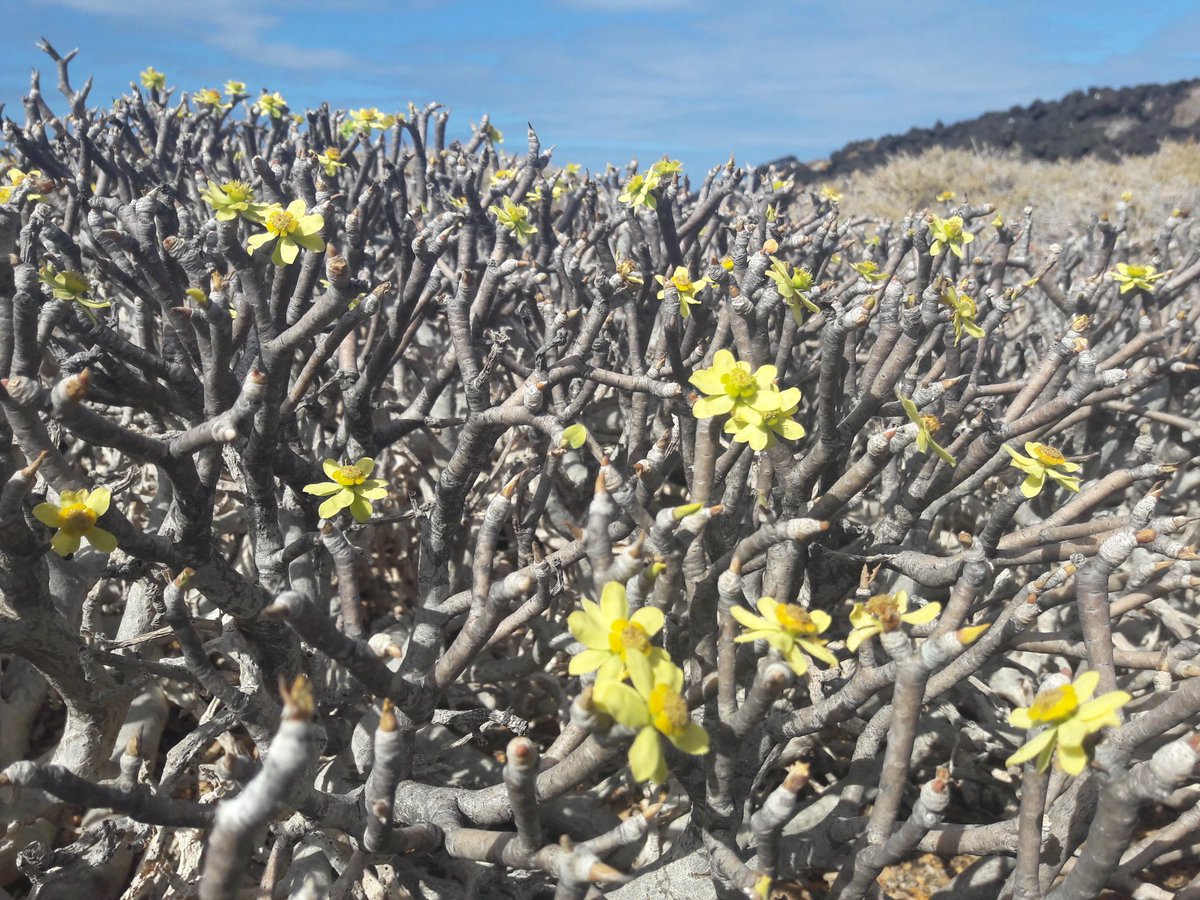 If anyone knows the little plant nxt to the lichen on the 3rd pic, please do let me know! https://abs.twimg.com/emoji/v2/... draggable="false" alt="😊" title="Lächelndes Gesicht mit lächelnden Augen" aria-label="Emoji: Lächelndes Gesicht mit lächelnden Augen"> #EF2019 [44/n]" title="Finally for today, just want to share some pics of the gorgeous #lichens and #Euphorbia shrubs that brighten up our long days in the field on rocky Alegranza. https://abs.twimg.com/emoji/v2/... draggable="false" alt="😍" title="Lächelndes Gesicht mit herzförmigen Augen" aria-label="Emoji: Lächelndes Gesicht mit herzförmigen Augen"> If anyone knows the little plant nxt to the lichen on the 3rd pic, please do let me know! https://abs.twimg.com/emoji/v2/... draggable="false" alt="😊" title="Lächelndes Gesicht mit lächelnden Augen" aria-label="Emoji: Lächelndes Gesicht mit lächelnden Augen"> #EF2019 [44/n]">
If anyone knows the little plant nxt to the lichen on the 3rd pic, please do let me know! https://abs.twimg.com/emoji/v2/... draggable="false" alt="😊" title="Lächelndes Gesicht mit lächelnden Augen" aria-label="Emoji: Lächelndes Gesicht mit lächelnden Augen"> #EF2019 [44/n]" title="Finally for today, just want to share some pics of the gorgeous #lichens and #Euphorbia shrubs that brighten up our long days in the field on rocky Alegranza. https://abs.twimg.com/emoji/v2/... draggable="false" alt="😍" title="Lächelndes Gesicht mit herzförmigen Augen" aria-label="Emoji: Lächelndes Gesicht mit herzförmigen Augen"> If anyone knows the little plant nxt to the lichen on the 3rd pic, please do let me know! https://abs.twimg.com/emoji/v2/... draggable="false" alt="😊" title="Lächelndes Gesicht mit lächelnden Augen" aria-label="Emoji: Lächelndes Gesicht mit lächelnden Augen"> #EF2019 [44/n]">
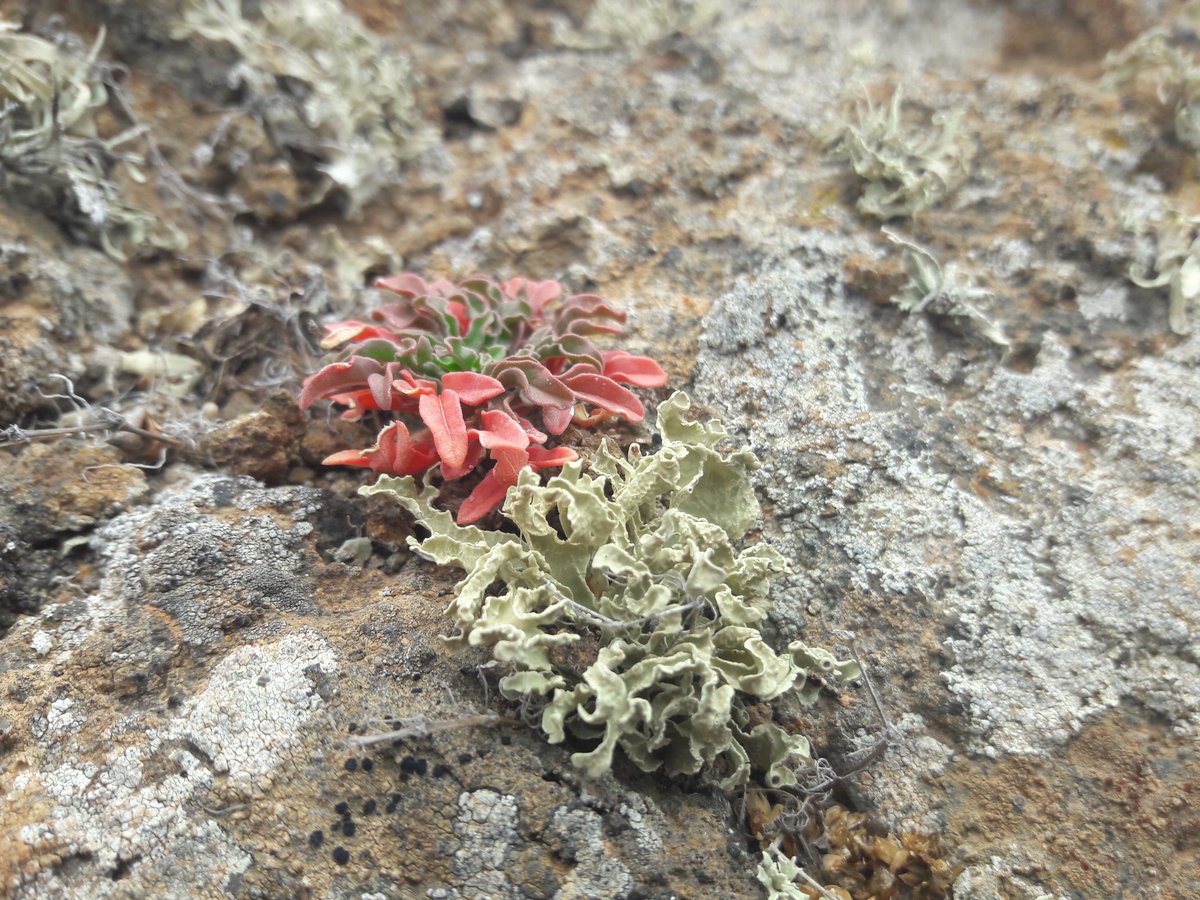 If anyone knows the little plant nxt to the lichen on the 3rd pic, please do let me know! https://abs.twimg.com/emoji/v2/... draggable="false" alt="😊" title="Lächelndes Gesicht mit lächelnden Augen" aria-label="Emoji: Lächelndes Gesicht mit lächelnden Augen"> #EF2019 [44/n]" title="Finally for today, just want to share some pics of the gorgeous #lichens and #Euphorbia shrubs that brighten up our long days in the field on rocky Alegranza. https://abs.twimg.com/emoji/v2/... draggable="false" alt="😍" title="Lächelndes Gesicht mit herzförmigen Augen" aria-label="Emoji: Lächelndes Gesicht mit herzförmigen Augen"> If anyone knows the little plant nxt to the lichen on the 3rd pic, please do let me know! https://abs.twimg.com/emoji/v2/... draggable="false" alt="😊" title="Lächelndes Gesicht mit lächelnden Augen" aria-label="Emoji: Lächelndes Gesicht mit lächelnden Augen"> #EF2019 [44/n]">
If anyone knows the little plant nxt to the lichen on the 3rd pic, please do let me know! https://abs.twimg.com/emoji/v2/... draggable="false" alt="😊" title="Lächelndes Gesicht mit lächelnden Augen" aria-label="Emoji: Lächelndes Gesicht mit lächelnden Augen"> #EF2019 [44/n]" title="Finally for today, just want to share some pics of the gorgeous #lichens and #Euphorbia shrubs that brighten up our long days in the field on rocky Alegranza. https://abs.twimg.com/emoji/v2/... draggable="false" alt="😍" title="Lächelndes Gesicht mit herzförmigen Augen" aria-label="Emoji: Lächelndes Gesicht mit herzförmigen Augen"> If anyone knows the little plant nxt to the lichen on the 3rd pic, please do let me know! https://abs.twimg.com/emoji/v2/... draggable="false" alt="😊" title="Lächelndes Gesicht mit lächelnden Augen" aria-label="Emoji: Lächelndes Gesicht mit lächelnden Augen"> #EF2019 [44/n]">
![Today we took a day off on Alegranza. At low tide Marina and I explored some otherwise inaccessible coastlines. We had to rush a bit at the end not to get caught between the cliffs and the rising water. But all ended well at this pearly black beach. Priceless. #EF2019 [45/n] Today we took a day off on Alegranza. At low tide Marina and I explored some otherwise inaccessible coastlines. We had to rush a bit at the end not to get caught between the cliffs and the rising water. But all ended well at this pearly black beach. Priceless. #EF2019 [45/n]](https://pbs.twimg.com/media/EBTHox2XoAECX9M.jpg)
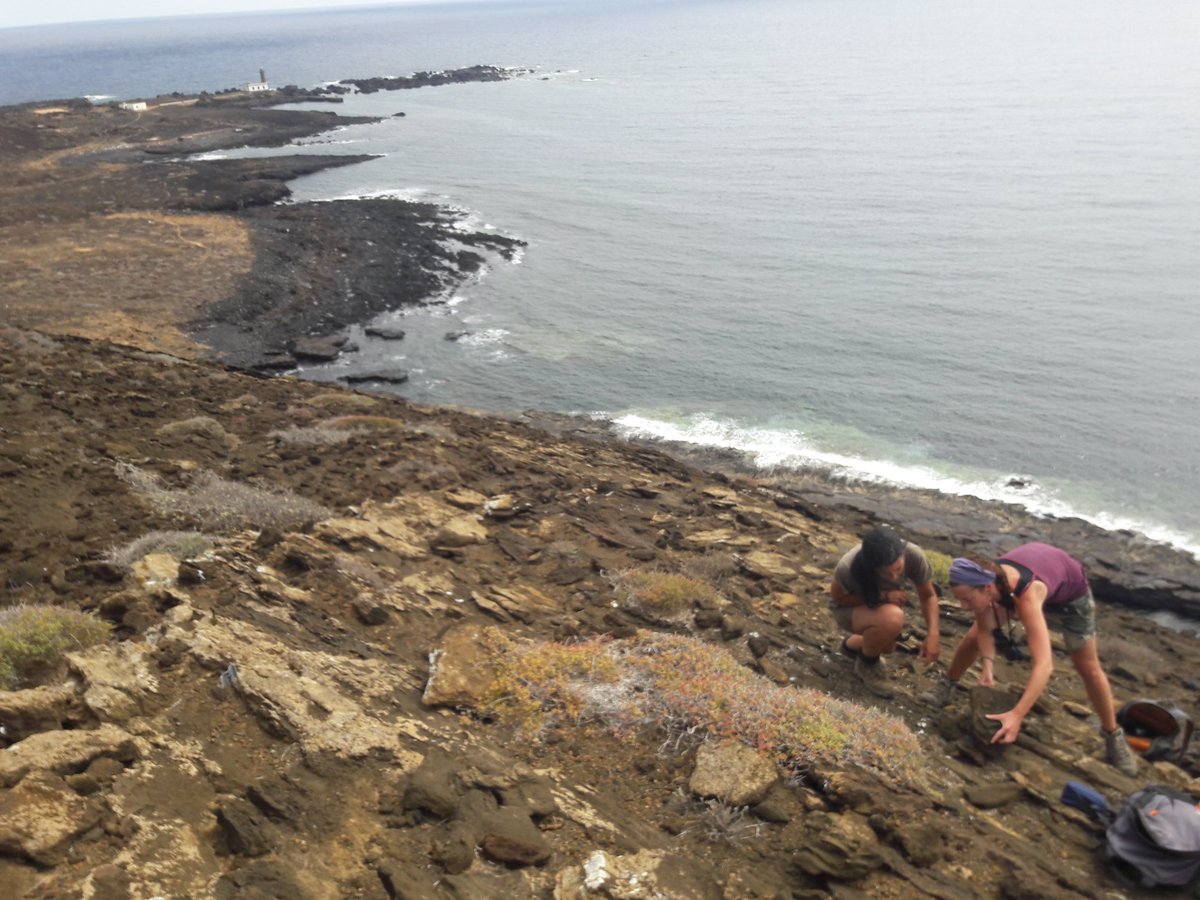 #EF2019 #womeninscience [47/n]" title="Great day today, visiting the nest sites of the Eleonora& #39;s Falcon colony on Rapdura. Marked abt 20 nests and placed nest cameras to read colour rings of the parents. Here some shots of Laura and Marina and action. https://abs.twimg.com/emoji/v2/... draggable="false" alt="💪" title="Angespannter Bizeps" aria-label="Emoji: Angespannter Bizeps"> #EF2019 #womeninscience [47/n]">
#EF2019 #womeninscience [47/n]" title="Great day today, visiting the nest sites of the Eleonora& #39;s Falcon colony on Rapdura. Marked abt 20 nests and placed nest cameras to read colour rings of the parents. Here some shots of Laura and Marina and action. https://abs.twimg.com/emoji/v2/... draggable="false" alt="💪" title="Angespannter Bizeps" aria-label="Emoji: Angespannter Bizeps"> #EF2019 #womeninscience [47/n]">
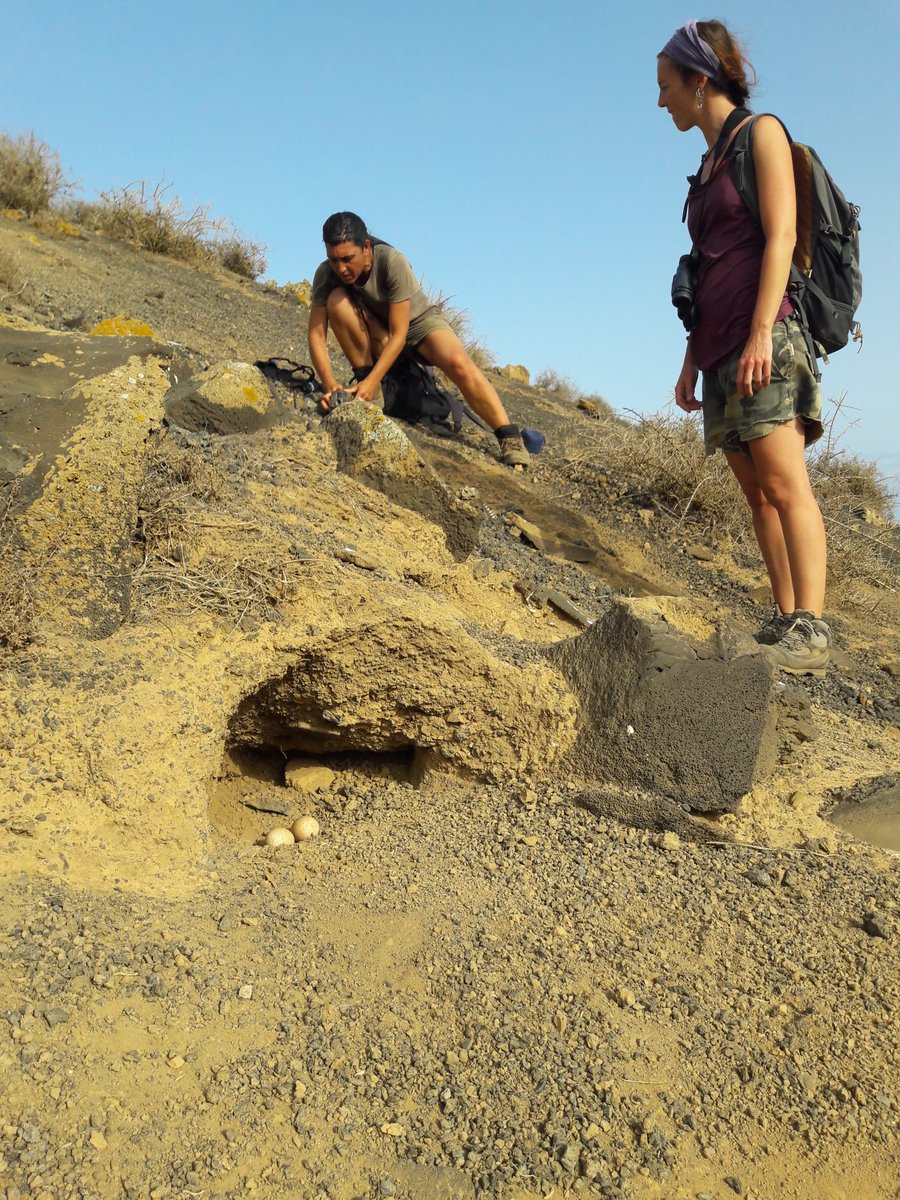 #EF2019 #womeninscience [47/n]" title="Great day today, visiting the nest sites of the Eleonora& #39;s Falcon colony on Rapdura. Marked abt 20 nests and placed nest cameras to read colour rings of the parents. Here some shots of Laura and Marina and action. https://abs.twimg.com/emoji/v2/... draggable="false" alt="💪" title="Angespannter Bizeps" aria-label="Emoji: Angespannter Bizeps"> #EF2019 #womeninscience [47/n]">
#EF2019 #womeninscience [47/n]" title="Great day today, visiting the nest sites of the Eleonora& #39;s Falcon colony on Rapdura. Marked abt 20 nests and placed nest cameras to read colour rings of the parents. Here some shots of Laura and Marina and action. https://abs.twimg.com/emoji/v2/... draggable="false" alt="💪" title="Angespannter Bizeps" aria-label="Emoji: Angespannter Bizeps"> #EF2019 #womeninscience [47/n]">
![Most nests were situated in a nice deep cave, offering plenty of shelter. We also found many feathers of common prey like Whitehroat, Pied Flycatcher, and Melodious Warbler. No fresh carcasses though, which is no surprise given the weak winds of last two days. #EF2019 [48/n] Most nests were situated in a nice deep cave, offering plenty of shelter. We also found many feathers of common prey like Whitehroat, Pied Flycatcher, and Melodious Warbler. No fresh carcasses though, which is no surprise given the weak winds of last two days. #EF2019 [48/n]](https://pbs.twimg.com/media/EBeDwrxXYAgP09_.jpg)
![The variation in nest sites, however, is remarkable, incl. some very exposed sites, even with deeper caves nearby. The nest in these pics is sheltered from prevailing winds (coming from left) but lacks a roof to provide shade. Perhaps inexperienced young parents? #EF2019 [49/n] The variation in nest sites, however, is remarkable, incl. some very exposed sites, even with deeper caves nearby. The nest in these pics is sheltered from prevailing winds (coming from left) but lacks a roof to provide shade. Perhaps inexperienced young parents? #EF2019 [49/n]](https://pbs.twimg.com/media/EBeFwhpWkAAHbja.jpg)
![The variation in nest sites, however, is remarkable, incl. some very exposed sites, even with deeper caves nearby. The nest in these pics is sheltered from prevailing winds (coming from left) but lacks a roof to provide shade. Perhaps inexperienced young parents? #EF2019 [49/n] The variation in nest sites, however, is remarkable, incl. some very exposed sites, even with deeper caves nearby. The nest in these pics is sheltered from prevailing winds (coming from left) but lacks a roof to provide shade. Perhaps inexperienced young parents? #EF2019 [49/n]](https://pbs.twimg.com/media/EBeFyfyXkAAOzql.jpg)
![It was great to see clutches up to 4 eggs, and that some falcons have enjoyed sizeable meals lately. Can you guess the species from these feathers? The species on the left is not very common prey, but we found the species on the right in abt 6 of 20 nests today. #EF2019 [50/n] It was great to see clutches up to 4 eggs, and that some falcons have enjoyed sizeable meals lately. Can you guess the species from these feathers? The species on the left is not very common prey, but we found the species on the right in abt 6 of 20 nests today. #EF2019 [50/n]](https://pbs.twimg.com/media/EBeIuJcXsAIhaUM.jpg)
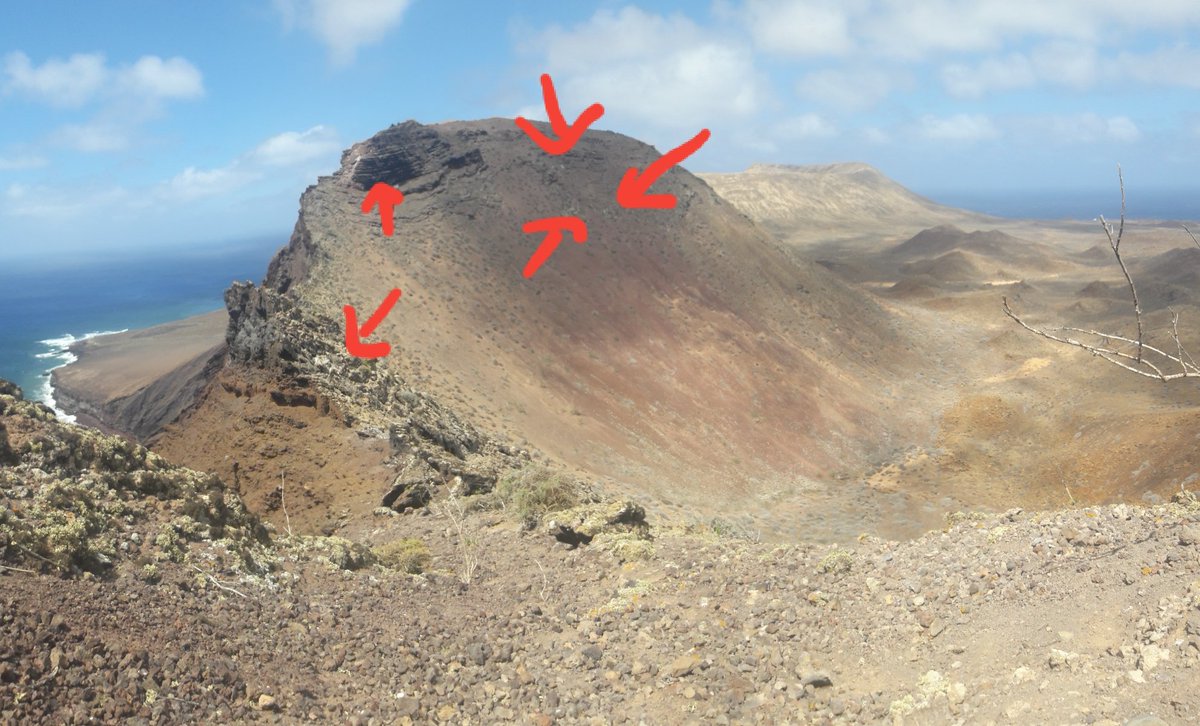 #EF2019 [52/n]" title="On Lobos now. On our way to some challenging nest sites. Lets do this https://abs.twimg.com/emoji/v2/... draggable="false" alt="💪" title="Angespannter Bizeps" aria-label="Emoji: Angespannter Bizeps"> #EF2019 [52/n]" class="img-responsive" style="max-width:100%;"/>
#EF2019 [52/n]" title="On Lobos now. On our way to some challenging nest sites. Lets do this https://abs.twimg.com/emoji/v2/... draggable="false" alt="💪" title="Angespannter Bizeps" aria-label="Emoji: Angespannter Bizeps"> #EF2019 [52/n]" class="img-responsive" style="max-width:100%;"/>
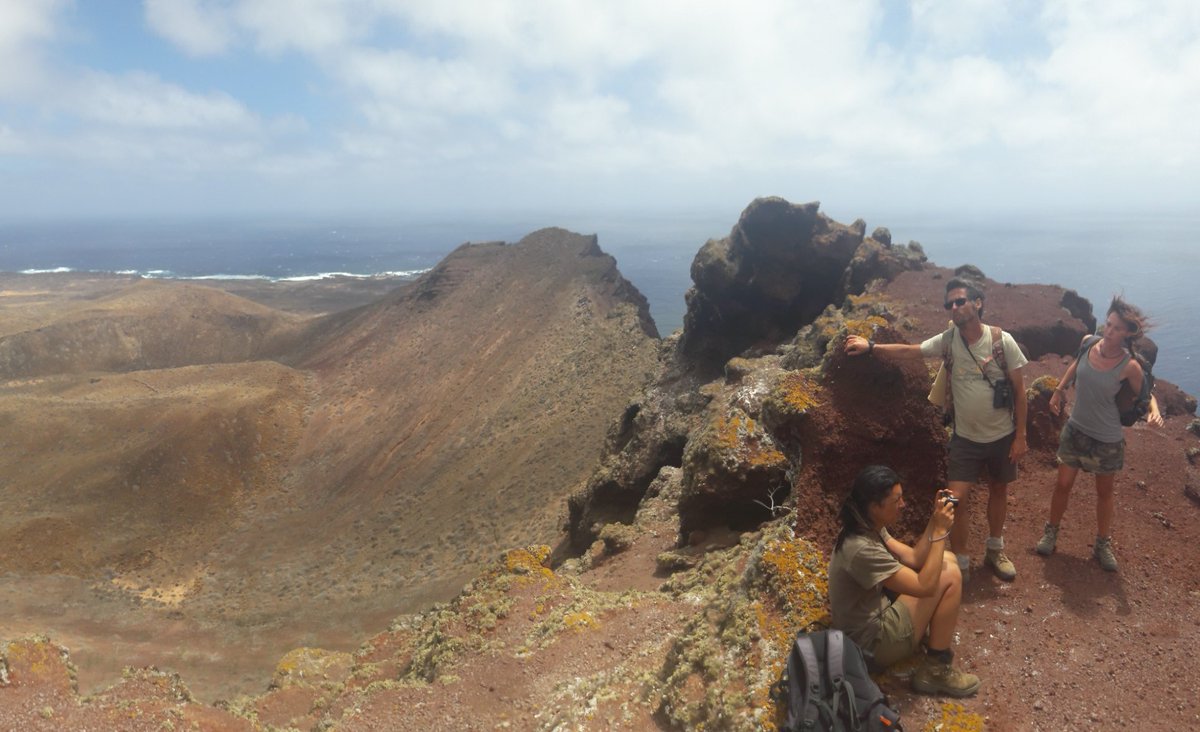 ringed as chick in 2007 and now breeding for 10th consecutive year https://abs.twimg.com/emoji/v2/... draggable="false" alt="😍" title="Lächelndes Gesicht mit herzförmigen Augen" aria-label="Emoji: Lächelndes Gesicht mit herzförmigen Augen">. #EF2019 [53/n]" title="Mission accomplished! Although we were unable to find 2 nests (new territorial recruits but not yet breeding?) we found all the others. Was especially nice to meet B1, a very confiding https://abs.twimg.com/emoji/v2/... draggable="false" alt="♀️" title="Weibliches Zeichen" aria-label="Emoji: Weibliches Zeichen"> ringed as chick in 2007 and now breeding for 10th consecutive year https://abs.twimg.com/emoji/v2/... draggable="false" alt="😍" title="Lächelndes Gesicht mit herzförmigen Augen" aria-label="Emoji: Lächelndes Gesicht mit herzförmigen Augen">. #EF2019 [53/n]">
ringed as chick in 2007 and now breeding for 10th consecutive year https://abs.twimg.com/emoji/v2/... draggable="false" alt="😍" title="Lächelndes Gesicht mit herzförmigen Augen" aria-label="Emoji: Lächelndes Gesicht mit herzförmigen Augen">. #EF2019 [53/n]" title="Mission accomplished! Although we were unable to find 2 nests (new territorial recruits but not yet breeding?) we found all the others. Was especially nice to meet B1, a very confiding https://abs.twimg.com/emoji/v2/... draggable="false" alt="♀️" title="Weibliches Zeichen" aria-label="Emoji: Weibliches Zeichen"> ringed as chick in 2007 and now breeding for 10th consecutive year https://abs.twimg.com/emoji/v2/... draggable="false" alt="😍" title="Lächelndes Gesicht mit herzförmigen Augen" aria-label="Emoji: Lächelndes Gesicht mit herzförmigen Augen">. #EF2019 [53/n]">
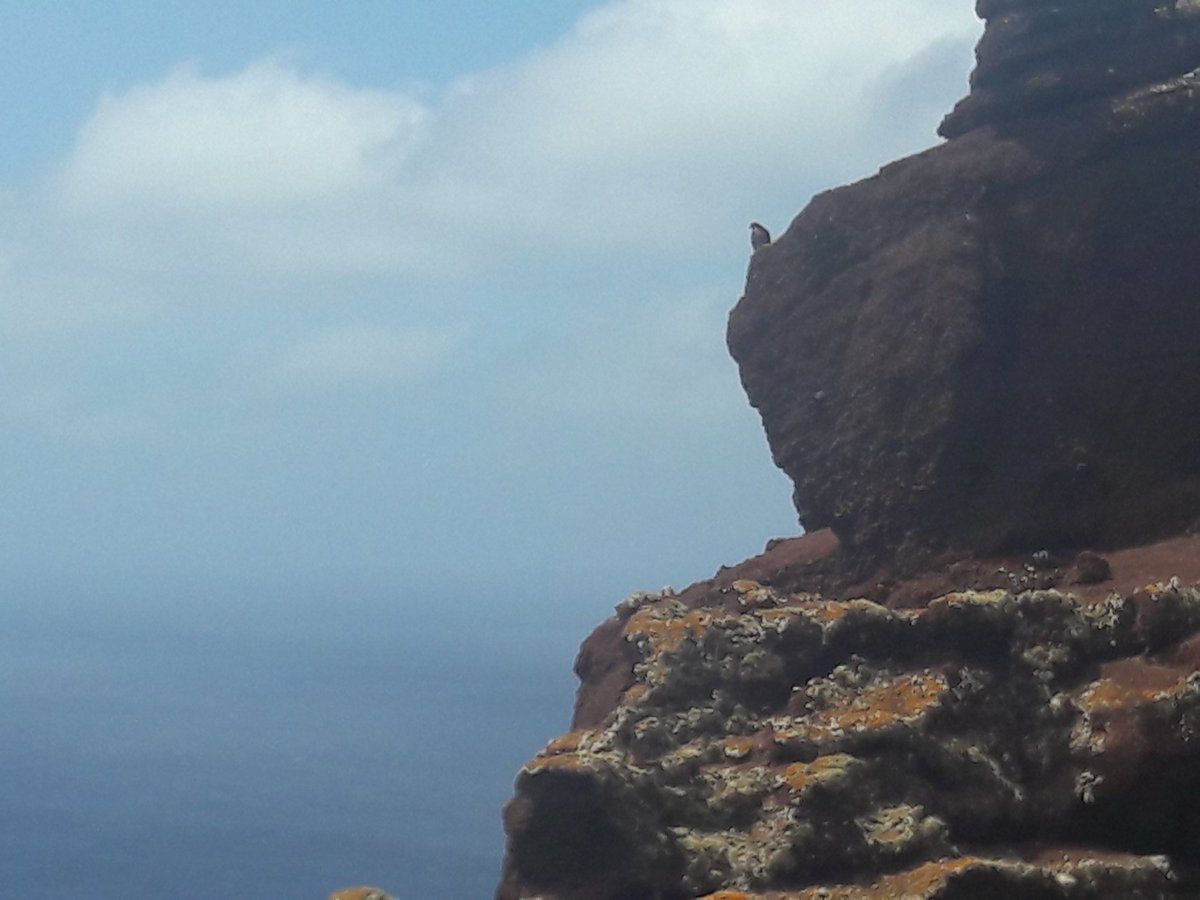 ringed as chick in 2007 and now breeding for 10th consecutive year https://abs.twimg.com/emoji/v2/... draggable="false" alt="😍" title="Lächelndes Gesicht mit herzförmigen Augen" aria-label="Emoji: Lächelndes Gesicht mit herzförmigen Augen">. #EF2019 [53/n]" title="Mission accomplished! Although we were unable to find 2 nests (new territorial recruits but not yet breeding?) we found all the others. Was especially nice to meet B1, a very confiding https://abs.twimg.com/emoji/v2/... draggable="false" alt="♀️" title="Weibliches Zeichen" aria-label="Emoji: Weibliches Zeichen"> ringed as chick in 2007 and now breeding for 10th consecutive year https://abs.twimg.com/emoji/v2/... draggable="false" alt="😍" title="Lächelndes Gesicht mit herzförmigen Augen" aria-label="Emoji: Lächelndes Gesicht mit herzförmigen Augen">. #EF2019 [53/n]">
ringed as chick in 2007 and now breeding for 10th consecutive year https://abs.twimg.com/emoji/v2/... draggable="false" alt="😍" title="Lächelndes Gesicht mit herzförmigen Augen" aria-label="Emoji: Lächelndes Gesicht mit herzförmigen Augen">. #EF2019 [53/n]" title="Mission accomplished! Although we were unable to find 2 nests (new territorial recruits but not yet breeding?) we found all the others. Was especially nice to meet B1, a very confiding https://abs.twimg.com/emoji/v2/... draggable="false" alt="♀️" title="Weibliches Zeichen" aria-label="Emoji: Weibliches Zeichen"> ringed as chick in 2007 and now breeding for 10th consecutive year https://abs.twimg.com/emoji/v2/... draggable="false" alt="😍" title="Lächelndes Gesicht mit herzförmigen Augen" aria-label="Emoji: Lächelndes Gesicht mit herzförmigen Augen">. #EF2019 [53/n]">
![And with winds finally picking up speed, we are also finding fresh prey again. The Melodious Warbler shown here (or whats left of it) likely caught within 50km from Alegranza, somewhere over the Atlantic Ocean. A good sign for the days to come. #EF2019 [54/n] And with winds finally picking up speed, we are also finding fresh prey again. The Melodious Warbler shown here (or whats left of it) likely caught within 50km from Alegranza, somewhere over the Atlantic Ocean. A good sign for the days to come. #EF2019 [54/n]](https://pbs.twimg.com/media/EBscggaXUAIIsxH.jpg)
![And with winds finally picking up speed, we are also finding fresh prey again. The Melodious Warbler shown here (or whats left of it) likely caught within 50km from Alegranza, somewhere over the Atlantic Ocean. A good sign for the days to come. #EF2019 [54/n] And with winds finally picking up speed, we are also finding fresh prey again. The Melodious Warbler shown here (or whats left of it) likely caught within 50km from Alegranza, somewhere over the Atlantic Ocean. A good sign for the days to come. #EF2019 [54/n]](https://pbs.twimg.com/media/EBscj9eXsAQzFr5.jpg)
 The Melodious Warbler on the right will be its first meal. Soon the parents will be working hard to provide each chick with 5 passerines daily. https://abs.twimg.com/emoji/v2/... draggable="false" alt="💪" title="Angespannter Bizeps" aria-label="Emoji: Angespannter Bizeps"> #EF2019 [56/n]" title="While we have some connectivity I am pleased to let you know we found the first hatchling Eleonora& #39;s Falcon today. https://abs.twimg.com/emoji/v2/... draggable="false" alt="😍" title="Lächelndes Gesicht mit herzförmigen Augen" aria-label="Emoji: Lächelndes Gesicht mit herzförmigen Augen"> The Melodious Warbler on the right will be its first meal. Soon the parents will be working hard to provide each chick with 5 passerines daily. https://abs.twimg.com/emoji/v2/... draggable="false" alt="💪" title="Angespannter Bizeps" aria-label="Emoji: Angespannter Bizeps"> #EF2019 [56/n]" class="img-responsive" style="max-width:100%;"/>
The Melodious Warbler on the right will be its first meal. Soon the parents will be working hard to provide each chick with 5 passerines daily. https://abs.twimg.com/emoji/v2/... draggable="false" alt="💪" title="Angespannter Bizeps" aria-label="Emoji: Angespannter Bizeps"> #EF2019 [56/n]" title="While we have some connectivity I am pleased to let you know we found the first hatchling Eleonora& #39;s Falcon today. https://abs.twimg.com/emoji/v2/... draggable="false" alt="😍" title="Lächelndes Gesicht mit herzförmigen Augen" aria-label="Emoji: Lächelndes Gesicht mit herzförmigen Augen"> The Melodious Warbler on the right will be its first meal. Soon the parents will be working hard to provide each chick with 5 passerines daily. https://abs.twimg.com/emoji/v2/... draggable="false" alt="💪" title="Angespannter Bizeps" aria-label="Emoji: Angespannter Bizeps"> #EF2019 [56/n]" class="img-responsive" style="max-width:100%;"/>
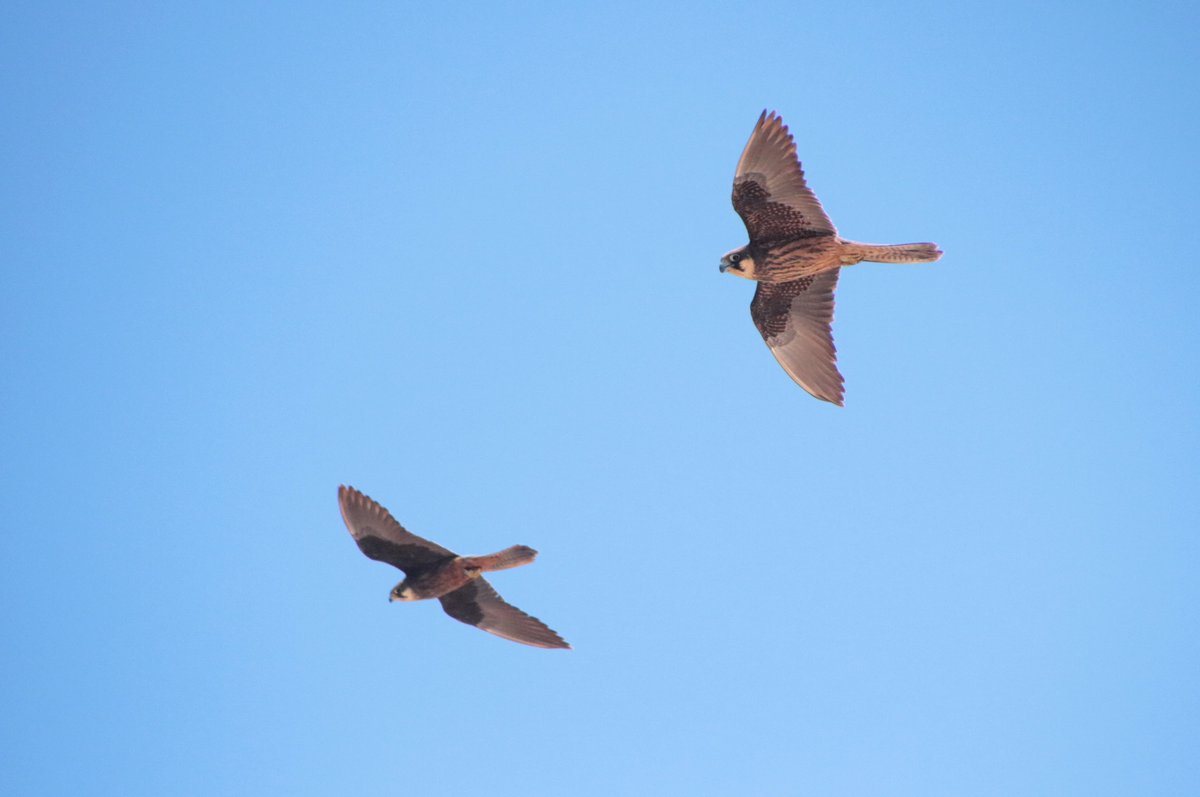 #EF2019 [58/n]" title="But ... I am now en route back home. So let me take a moment to fill you in on the progress in the Eleonora& #39;s Falcon project since the middle of August. Here& #39;s a nice picture of one of the pale morph falcon pairs on #Alegranza to get you back into the mood https://abs.twimg.com/emoji/v2/... draggable="false" alt="👇" title="Rückhand Zeigefinger nach unten" aria-label="Emoji: Rückhand Zeigefinger nach unten"> #EF2019 [58/n]" class="img-responsive" style="max-width:100%;"/>
#EF2019 [58/n]" title="But ... I am now en route back home. So let me take a moment to fill you in on the progress in the Eleonora& #39;s Falcon project since the middle of August. Here& #39;s a nice picture of one of the pale morph falcon pairs on #Alegranza to get you back into the mood https://abs.twimg.com/emoji/v2/... draggable="false" alt="👇" title="Rückhand Zeigefinger nach unten" aria-label="Emoji: Rückhand Zeigefinger nach unten"> #EF2019 [58/n]" class="img-responsive" style="max-width:100%;"/>
![Until we went offline mid August we had basically been censusing the Eleonora´s Falcon population and identifying nest sites. We ended up finding no less than 114 accessible nest sites, making it a good year for the falcons on #Alegranza. #EF2019 [59/n] Until we went offline mid August we had basically been censusing the Eleonora´s Falcon population and identifying nest sites. We ended up finding no less than 114 accessible nest sites, making it a good year for the falcons on #Alegranza. #EF2019 [59/n]](https://pbs.twimg.com/media/EEhFqH2W4AUytvp.jpg)
![Until we went offline mid August we had basically been censusing the Eleonora´s Falcon population and identifying nest sites. We ended up finding no less than 114 accessible nest sites, making it a good year for the falcons on #Alegranza. #EF2019 [59/n] Until we went offline mid August we had basically been censusing the Eleonora´s Falcon population and identifying nest sites. We ended up finding no less than 114 accessible nest sites, making it a good year for the falcons on #Alegranza. #EF2019 [59/n]](https://pbs.twimg.com/media/EEhFqIEWsAMGU27.jpg)
![During this period we spent a lot of time scoping the falcon colonies on the slopes of Rapadura, Lobos and the exterior and interior of the Caldera. ´La cueva de la Lechuza´ was one of our regular viewpoints to census the latter colony. #EF2019 [60/n] During this period we spent a lot of time scoping the falcon colonies on the slopes of Rapadura, Lobos and the exterior and interior of the Caldera. ´La cueva de la Lechuza´ was one of our regular viewpoints to census the latter colony. #EF2019 [60/n]](https://pbs.twimg.com/media/EEhFrjtWkAAbkCu.jpg)
![A critical part of the #fieldwork is learning to navigate the barren rock of Alegranza. Some rock formations like ´El Elefantito´ (pic) make for obvious landmarks. But even a small tobacco plant or a yellow rock on a cinnamon slope may become trusted waypoints. #EF2019 [61/n] A critical part of the #fieldwork is learning to navigate the barren rock of Alegranza. Some rock formations like ´El Elefantito´ (pic) make for obvious landmarks. But even a small tobacco plant or a yellow rock on a cinnamon slope may become trusted waypoints. #EF2019 [61/n]](https://pbs.twimg.com/media/EEhFsYRXsAYoaJB.jpg)
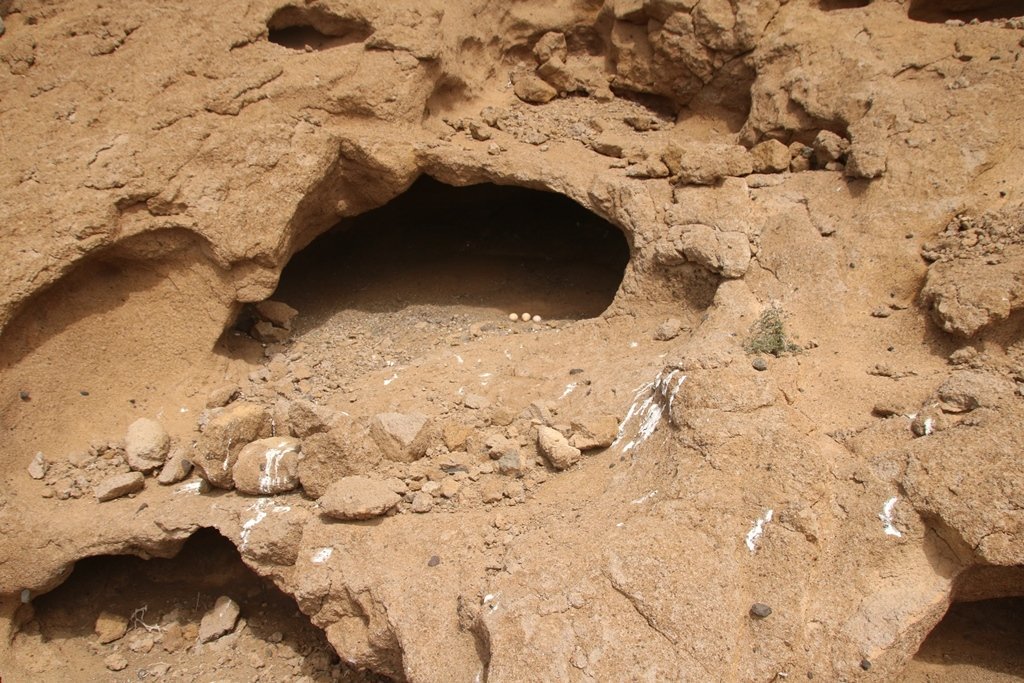
![By mid August we all had a good sense of where the falcons were. The next step was to determine the identities of colour ringed parents with nest cameras. An exciting time to visit the nests, as the first falcons were hatching. #EF2019 [63/n] By mid August we all had a good sense of where the falcons were. The next step was to determine the identities of colour ringed parents with nest cameras. An exciting time to visit the nests, as the first falcons were hatching. #EF2019 [63/n]](https://pbs.twimg.com/media/EEhFtuJWkAAOJki.jpg)
![The female falcons are very reluctant to leave the nest once the chicks have hatched, even when they see us approaching. So it was with this female at nest EN-4, providing a shoddy photographer like me with an opportunity to shoot a half decent picture. #EF2019 [64/n] The female falcons are very reluctant to leave the nest once the chicks have hatched, even when they see us approaching. So it was with this female at nest EN-4, providing a shoddy photographer like me with an opportunity to shoot a half decent picture. #EF2019 [64/n]](https://pbs.twimg.com/media/EEhJH_jXYAE0Thn.jpg)
![With hungry chicks in the nests we could start studying the falcon diet. As expected we mostly found juvenile songbirds in the falcon´s nests and larders. This Reed Warbler, however, had been ringed as a 1st year bird in France in 2018 #EF2019 [65/n] With hungry chicks in the nests we could start studying the falcon diet. As expected we mostly found juvenile songbirds in the falcon´s nests and larders. This Reed Warbler, however, had been ringed as a 1st year bird in France in 2018 #EF2019 [65/n]](https://pbs.twimg.com/media/EEhN6bLXYAgzVDO.jpg)
![This interaction between parasites, vectors and hosts makes for an interesting evolutionary puzzle. Spanish readers can read all about it in a very nice #scicomm article by Laura Gangoso, @rafgutlop, @JMartinezPuente and @FiguerolaLab in the latest issue of @RevistaQuercus. [67/n] This interaction between parasites, vectors and hosts makes for an interesting evolutionary puzzle. Spanish readers can read all about it in a very nice #scicomm article by Laura Gangoso, @rafgutlop, @JMartinezPuente and @FiguerolaLab in the latest issue of @RevistaQuercus. [67/n]](https://pbs.twimg.com/media/EEhbF9uXoAAocAc.jpg)
![This interaction between parasites, vectors and hosts makes for an interesting evolutionary puzzle. Spanish readers can read all about it in a very nice #scicomm article by Laura Gangoso, @rafgutlop, @JMartinezPuente and @FiguerolaLab in the latest issue of @RevistaQuercus. [67/n] This interaction between parasites, vectors and hosts makes for an interesting evolutionary puzzle. Spanish readers can read all about it in a very nice #scicomm article by Laura Gangoso, @rafgutlop, @JMartinezPuente and @FiguerolaLab in the latest issue of @RevistaQuercus. [67/n]](https://pbs.twimg.com/media/EEhbF9gXsAEVDcZ.jpg)
![It wasn& #39;t always easy finding prey. Especially in late Aug and early Sept, when the winds blowing migrant birds to the Canaries subsided. Any food the males caught was fed to chicks; so no larders. But at least they seemed content with pot bellies and full crops. #EF2019 [68/n] It wasn& #39;t always easy finding prey. Especially in late Aug and early Sept, when the winds blowing migrant birds to the Canaries subsided. Any food the males caught was fed to chicks; so no larders. But at least they seemed content with pot bellies and full crops. #EF2019 [68/n]](https://pbs.twimg.com/media/EEhb4EKXkAEWsva.jpg)
![These were busy times. Hiking to every nest several times to retrieve nest cameras, checking for prey remains, and establishing the age of chicks to determine on what date each nest should be ringed. But always profoundly enjoying the gorgeous Isla de Alegranza. #EF2019 [69/n] These were busy times. Hiking to every nest several times to retrieve nest cameras, checking for prey remains, and establishing the age of chicks to determine on what date each nest should be ringed. But always profoundly enjoying the gorgeous Isla de Alegranza. #EF2019 [69/n]](https://pbs.twimg.com/media/EEhd2ABXUAALoHb.jpg)
![These were busy times. Hiking to every nest several times to retrieve nest cameras, checking for prey remains, and establishing the age of chicks to determine on what date each nest should be ringed. But always profoundly enjoying the gorgeous Isla de Alegranza. #EF2019 [69/n] These were busy times. Hiking to every nest several times to retrieve nest cameras, checking for prey remains, and establishing the age of chicks to determine on what date each nest should be ringed. But always profoundly enjoying the gorgeous Isla de Alegranza. #EF2019 [69/n]](https://pbs.twimg.com/media/EEhd2APXUAYX3UX.jpg)
![These were busy times. Hiking to every nest several times to retrieve nest cameras, checking for prey remains, and establishing the age of chicks to determine on what date each nest should be ringed. But always profoundly enjoying the gorgeous Isla de Alegranza. #EF2019 [69/n] These were busy times. Hiking to every nest several times to retrieve nest cameras, checking for prey remains, and establishing the age of chicks to determine on what date each nest should be ringed. But always profoundly enjoying the gorgeous Isla de Alegranza. #EF2019 [69/n]](https://pbs.twimg.com/media/EEhd2ARXoAAoRwX.jpg)
![These were busy times. Hiking to every nest several times to retrieve nest cameras, checking for prey remains, and establishing the age of chicks to determine on what date each nest should be ringed. But always profoundly enjoying the gorgeous Isla de Alegranza. #EF2019 [69/n] These were busy times. Hiking to every nest several times to retrieve nest cameras, checking for prey remains, and establishing the age of chicks to determine on what date each nest should be ringed. But always profoundly enjoying the gorgeous Isla de Alegranza. #EF2019 [69/n]](https://pbs.twimg.com/media/EEhd2ALXYAAY8I2.jpg)
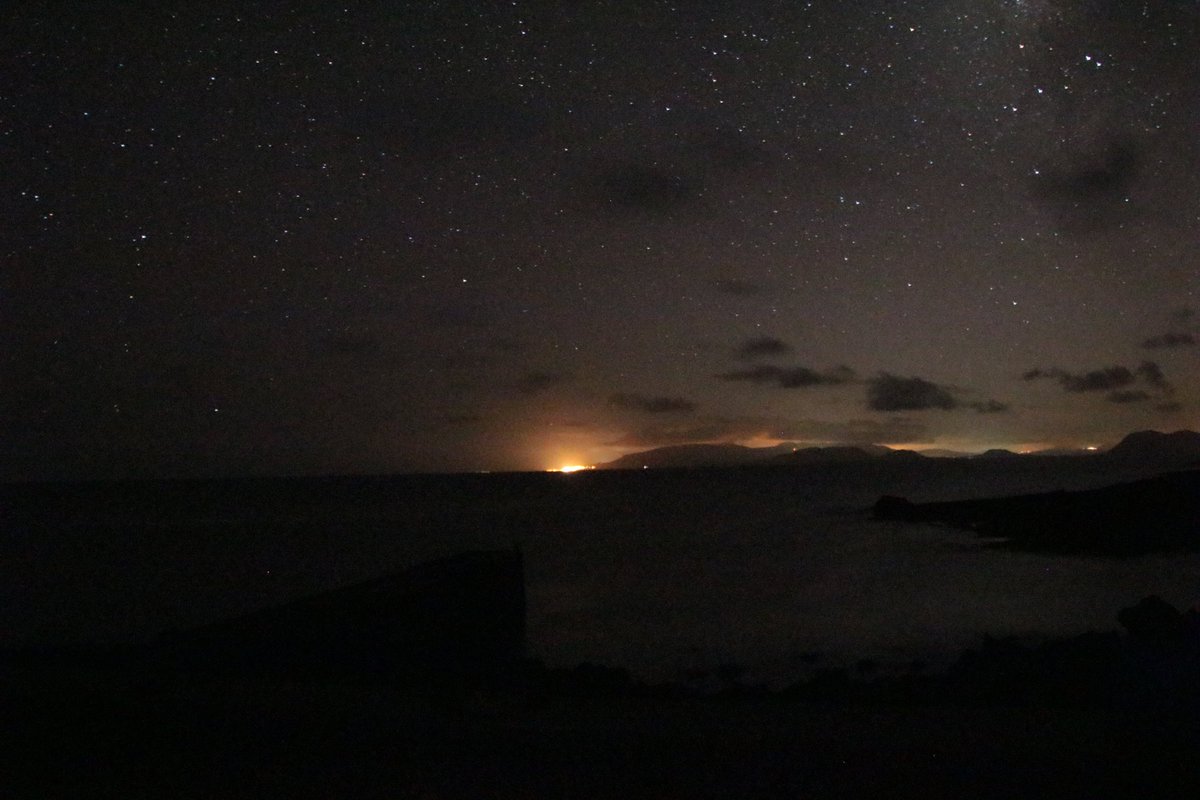 https://abs.twimg.com/emoji/v2/... draggable="false" alt="😉" title="Zwinkerndes Gesicht" aria-label="Emoji: Zwinkerndes Gesicht"> #EF2019 [70/n]" title="Needless to say, we thoroughly enjoyed our time off in the evening. Enjoying a good meal and a sip of rum under the night sky of Alegranza is hardly a punishment either https://abs.twimg.com/emoji/v2/... draggable="false" alt="😍" title="Lächelndes Gesicht mit herzförmigen Augen" aria-label="Emoji: Lächelndes Gesicht mit herzförmigen Augen">https://abs.twimg.com/emoji/v2/... draggable="false" alt="😉" title="Zwinkerndes Gesicht" aria-label="Emoji: Zwinkerndes Gesicht"> #EF2019 [70/n]" class="img-responsive" style="max-width:100%;"/>
https://abs.twimg.com/emoji/v2/... draggable="false" alt="😉" title="Zwinkerndes Gesicht" aria-label="Emoji: Zwinkerndes Gesicht"> #EF2019 [70/n]" title="Needless to say, we thoroughly enjoyed our time off in the evening. Enjoying a good meal and a sip of rum under the night sky of Alegranza is hardly a punishment either https://abs.twimg.com/emoji/v2/... draggable="false" alt="😍" title="Lächelndes Gesicht mit herzförmigen Augen" aria-label="Emoji: Lächelndes Gesicht mit herzförmigen Augen">https://abs.twimg.com/emoji/v2/... draggable="false" alt="😉" title="Zwinkerndes Gesicht" aria-label="Emoji: Zwinkerndes Gesicht"> #EF2019 [70/n]" class="img-responsive" style="max-width:100%;"/>
![Although we were always focused on the falcons while working in the colonies, we often got a chance to observe some other birds while hiking across the island. Watching some of the local Ospreys fishing in the ocean was particularly entertaining. #EF2019 [71/n] Although we were always focused on the falcons while working in the colonies, we often got a chance to observe some other birds while hiking across the island. Watching some of the local Ospreys fishing in the ocean was particularly entertaining. #EF2019 [71/n]](https://pbs.twimg.com/media/EEk7A5wXoAA1-jn.jpg)
![And of course the Ravens were very entertaining, always up to some mischief, always curious. If not harassing the falcons (which helps us to locate nest sites) they often stalked us as we climbed the steep slopes. Who& #39;s observing who in these pictures, you think? #EF2019 [72/n] And of course the Ravens were very entertaining, always up to some mischief, always curious. If not harassing the falcons (which helps us to locate nest sites) they often stalked us as we climbed the steep slopes. Who& #39;s observing who in these pictures, you think? #EF2019 [72/n]](https://pbs.twimg.com/media/EEk7BfpXUAAQWrV.jpg)
![And of course the Ravens were very entertaining, always up to some mischief, always curious. If not harassing the falcons (which helps us to locate nest sites) they often stalked us as we climbed the steep slopes. Who& #39;s observing who in these pictures, you think? #EF2019 [72/n] And of course the Ravens were very entertaining, always up to some mischief, always curious. If not harassing the falcons (which helps us to locate nest sites) they often stalked us as we climbed the steep slopes. Who& #39;s observing who in these pictures, you think? #EF2019 [72/n]](https://pbs.twimg.com/media/EEk7Bf4X4AUI26e.jpg)
![Ravens and Ospreys had finished breeding by the time we arrived. But we did see many nests on the steep cliffs around the island. I was never able to check the nests up close, but it seems that invasive Tabaco Moro (Nicotiana glauca) is a key building material. #EF2019 [73/n] Ravens and Ospreys had finished breeding by the time we arrived. But we did see many nests on the steep cliffs around the island. I was never able to check the nests up close, but it seems that invasive Tabaco Moro (Nicotiana glauca) is a key building material. #EF2019 [73/n]](https://pbs.twimg.com/media/EEk7CFWWsAInoYr.jpg)
![Ravens and Ospreys had finished breeding by the time we arrived. But we did see many nests on the steep cliffs around the island. I was never able to check the nests up close, but it seems that invasive Tabaco Moro (Nicotiana glauca) is a key building material. #EF2019 [73/n] Ravens and Ospreys had finished breeding by the time we arrived. But we did see many nests on the steep cliffs around the island. I was never able to check the nests up close, but it seems that invasive Tabaco Moro (Nicotiana glauca) is a key building material. #EF2019 [73/n]](https://pbs.twimg.com/media/EEk7CFVWwAArIoP.jpg)
![One who visits Alegranza by day will only rarely see an adult shearwater, but must always be careful not to step into one of their many burrows. Navigating Alegranza is a lot like navigating a huge lump of gruyere cheese at times, thanks to the shearwaters. #EF2019 [75/n] One who visits Alegranza by day will only rarely see an adult shearwater, but must always be careful not to step into one of their many burrows. Navigating Alegranza is a lot like navigating a huge lump of gruyere cheese at times, thanks to the shearwaters. #EF2019 [75/n]](https://pbs.twimg.com/media/EEk9WiVWkAIr8DS.jpg)
![One who visits Alegranza by day will only rarely see an adult shearwater, but must always be careful not to step into one of their many burrows. Navigating Alegranza is a lot like navigating a huge lump of gruyere cheese at times, thanks to the shearwaters. #EF2019 [75/n] One who visits Alegranza by day will only rarely see an adult shearwater, but must always be careful not to step into one of their many burrows. Navigating Alegranza is a lot like navigating a huge lump of gruyere cheese at times, thanks to the shearwaters. #EF2019 [75/n]](https://pbs.twimg.com/media/EEk9WieWwAA7yeO.jpg)
![Sometimes shearwaters use the same cave as the falcons to breed. This can cause some problems as shearwaters can accidentally trample a falcon egg. On nest cam footage we have even seen overeager shearwaters incubating falcon eggs, much to the falcons´ chagrin. #EF2019 [76/n] Sometimes shearwaters use the same cave as the falcons to breed. This can cause some problems as shearwaters can accidentally trample a falcon egg. On nest cam footage we have even seen overeager shearwaters incubating falcon eggs, much to the falcons´ chagrin. #EF2019 [76/n]](https://pbs.twimg.com/media/EEk9ZmmXoAAFQ1p.jpg)
![In fact, shearwaters seem to breed in whatever cavity they can find. Even a plastic box will do. But while we had a laugh when we found this chick, we also saw the dark side of marine pollution on Alegranza, such as this shearwater entangled in old fishing gear. #EF2019 [77/n] In fact, shearwaters seem to breed in whatever cavity they can find. Even a plastic box will do. But while we had a laugh when we found this chick, we also saw the dark side of marine pollution on Alegranza, such as this shearwater entangled in old fishing gear. #EF2019 [77/n]](https://pbs.twimg.com/media/EEk9aiTW4AIfbrY.jpg)
![In fact, shearwaters seem to breed in whatever cavity they can find. Even a plastic box will do. But while we had a laugh when we found this chick, we also saw the dark side of marine pollution on Alegranza, such as this shearwater entangled in old fishing gear. #EF2019 [77/n] In fact, shearwaters seem to breed in whatever cavity they can find. Even a plastic box will do. But while we had a laugh when we found this chick, we also saw the dark side of marine pollution on Alegranza, such as this shearwater entangled in old fishing gear. #EF2019 [77/n]](https://pbs.twimg.com/media/EEk9aiVW4AAgWGB.jpg)
![Besides numerous shearwater chicks I was delighted to also see a Bulwer& #39;s Petrel chick for the first time. Seabird enthusiasts among you might want to follow the @SeabirdEcology group, who are doing great research on some other islets in the Chinijo archipelago. #EF2019 [78/n] Besides numerous shearwater chicks I was delighted to also see a Bulwer& #39;s Petrel chick for the first time. Seabird enthusiasts among you might want to follow the @SeabirdEcology group, who are doing great research on some other islets in the Chinijo archipelago. #EF2019 [78/n]](https://pbs.twimg.com/media/EEk9b4nXkAAoqez.jpg)


